My Final Project
What I would really like to do for my final project is a support device for deaf people
and for those who suffer from hearing problems.
The reason why I chose this topic is that I feel very lucky to experience nature's
color, parfums and sounds and I would like to help everyone to be given the same possibilities
to do that.
Description
Essentially, I am thinking about developing a wearable tool capable
of sending vibrations, according to the power of sounds perceived around.
I know I'm quite ambitious and the greatest part of the project will get clearer
during next months because I have little knowledge about electronics and programming.
Anyway, I've already decided some specifics I want to satisfy:
- Wearable technology
- Ease of wearing
- Pleasant appearance
- Lightness
Concept
I've talked about both clothing and jewelry for my final project because I could realise soon that making a necklace or bracelet would be better but my first idea was to create a shirt with an inner pattern aimed at transmitting vibrations and something like a sewed necklace on which I would put microphones.
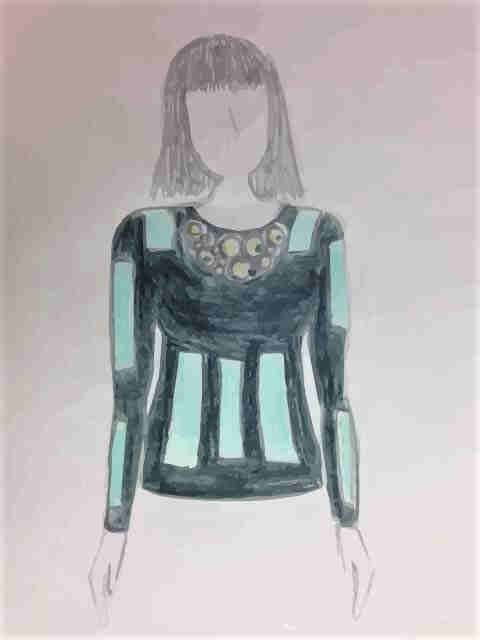
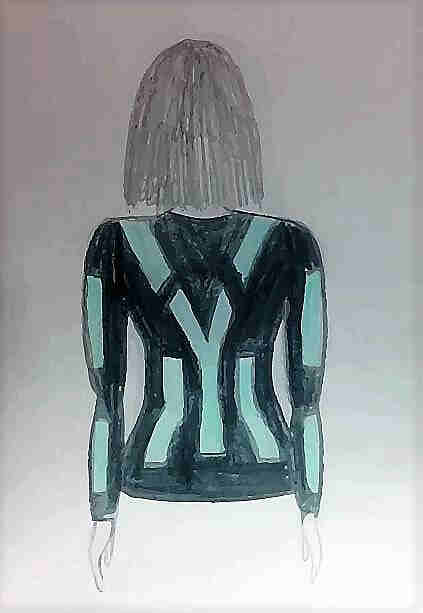
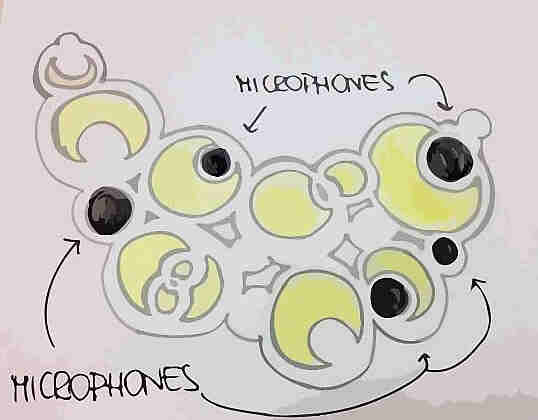
[Parts in lightblue are intended to send vibrations].
I think I need:
- Sewable Board;
- Bluetooth module;
- Microphones;
- Vibration motors;
- Conductive wire;
...and maybe lots of other items I'll discover soon.
My intention is to sew the board and all the items that have to integrate in the rear of the necklace,
because I've sewed with conductive wire sometimes and it turned out to be stiff and fragile,
easy to be broken.
I've to discover how sound can be translated into vibrations and only after it will be clearer
how to arrange everything.
State of the art
I've been having a look on the internet about already developed devices similar to my idea
these days. It came up that many fascinating idea have already been shaped up:
-
Vibeat a device that helps deaf people in listening to music;
-
Wear,an hearing pendant aid tool that filter background noise to make the conversation
more understandable;
In conclusion, I think all the projects I saw where inspirating a lot,
but the technology I would like to develop is nearer to Stanford University's and Aria projects.
Reflections
What really matters to me is to develop something more similar to a common piece of clothing o jewelry and not like a medical prosthesis, due to the importance of cutting down the idea of "diversity", which too often rises up in people's mind when it comes to phisical problems.
There I put a picture I casually found on internet which made me feel quite disappointed.
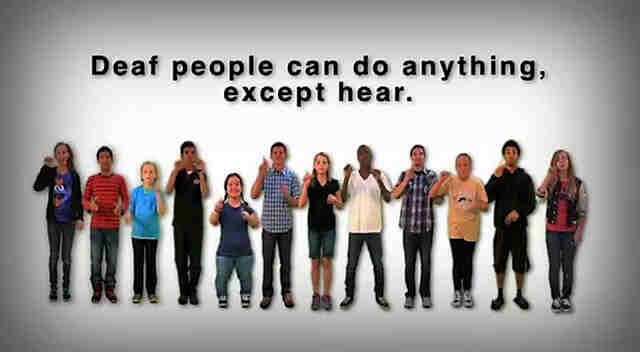
What I couldn't understand is why common thinking associate hearing just to hears.
I would like people to take their body's perception back, because touching with hands is easy,
seeing with eyes is ordinary, but I know few people who can spread sensations and feelings
using all their senses together and, most of all, their soul.
Sometimes people should just drop down their mobile and cultivate human interactions and sensitivity.
Below I list some remarkable experiences of people with hearing problems to reflect on:
- Ludwig van Beethoven (Musician);
- Elise Roy (Designer);
- Keith Nolan (Cadet private of U.S);
- The British Paraorchestra (Musicians);
- Stevie Wonder (Singer);
- Stevie Wonder (Singer);
- Please watch this
Update - 12th March 2017
Seeking practical application and electronics that could support my project development, I decided to have an idea about what I could use to send vibrations. At first I had no idea about what in the world could do that on fabric, but by quickly looking on the internet, I discovered vibration motors could be a solution. Main problems of putting electronics on fabrics and pieces of clothing in general are:
- flexibility
- thickness of components
- washability
I here found
an article that gave me an idea about several different kind of motors existing and I focused on coin-shaped ones.
Also Adafruit website gave me loads of answers to my question:
I also found this tutorial about a simple exercise woth motors and Arduino and I intend to practically try it.
Update - 5th April 2017
By now I started making steps forward with coin motors and you can find my experience with them in week10 documentation.
Update - 17th May 2017
Here you can find some little steps I made into microphone's world
Update - 29th May 2017
Believe it or not, something is telling me my final project it's not just something I'm really fond of, but that I HAVE TO DO IT. Yeah, of course you have, you must get
your diploma! No, no, not for this reason: I feel like there's a deep cause that it's driving me, I really believe that there's a need to move steps in disability field THIS way, not only from a
medical or a technological point of view. We must remember people are feelings, emotions and their necessities have to be approached not with an only-pragmatic behaviour, we
must always remember each of us wants to be dealt with as he/she is 90% soul and 10% body (see that I'm now speaking generally, I'm referring to ANY kind of need that ANYONE of us may have).
I strongly believed there's a widespread lack of sensitivity in approaching to disabilities, even from great part of those people and companies that specifically work in this field.
I got support to my thesis after a casual (I would now call it fluke) aquaintance I made with a girl, a wonderful girl, that incientally took part to a conference, in our lab's structure, whose
partecipants were after guided in a Fab Lab tour: this place was what she was looking for, she said and to me she was that kind of person I wanted to have as a friend. I won't now list
all the incredible things she did in her life (which would really make you say "WOW"), but I have a specific interest in reporting her will: she's sick and tired about people's rudeness when talking to her and
generally showed in dealing with disabilities, about having to say loudly she's deaf, because people get easily annoyed of repeating speeches, about hearing aids costs, about the gap between
hearing and deaf world, about hearing people pretending to know how she feels and what her need are.
She simply reinforced my belief and I strongly desired to help her in all this: her enthusiasm in hearing about my idea of final project, somehow speeded our closeness up and even if just two weeks have passed since
I first met her, maybe our desire syntony, maybe 6-days side-by-side collaboration, maybe just the fact that we immediately feel attachment one for each other, makes me now think this has been one of the most enrichment-bearing concurrence of my life.
Add to this that a collaboration with a deaf women's association had already been planned for 22nd-27th of May with Danielle Wilde and maybe you can understand why I previously said I HAVE to do this.
This long introduction may have bored some of you but it's so meaningful for my belief's expression and my final project development that let me say it was really necessary a lot.
Before explaining last week activities, I prefer to start with a series of pictures that could drive you to the right mood for a better understanding of the touching atmosphere we worked in:
After everyone introduced him/herself to the group, first day's activities consisted in exploring personal response and feelings to vibrations, with the use of many devices.
Everyone had to design his own avatar and to attach post-it to record sensations: this can sounds stupid or time- wasting but it instead was really helpful to understand an important starting point
of our work:
Stop for a while and ask yourself if you ever thought deeply about that: general belief is that deafness is A disability, we rarely consider that exist many forms of hearing difficulties (less or more severe, degenerative, since birth, with eldership...),
or that people can react differently to such problems occurrence (someone wants hearing aids, someone else doesn't, someone would like to know what his/her name sounds like, someone prefers to feel vibrations, someone sees his/her interpreter as a medium in world perceiving).
Up to this point it was clear to me that if on a side it was important to give response to the largest range of people as possible and to make my device customizable.
I so focused on some common points that emerged from inner desires the three deaf women exposed:
- perceive sound DIRECTION and not only a wave of vibrations surrounding you;
- preserve FREEDOM: the device must be easy-off shaped (I there discarded shirt idea for now)
- make other people NOTICE DEAFNESS
- be something FASHIONABLE and NICE
I here show prototypes and ideas that emerged from me, Sole and Flavio during the workshop.
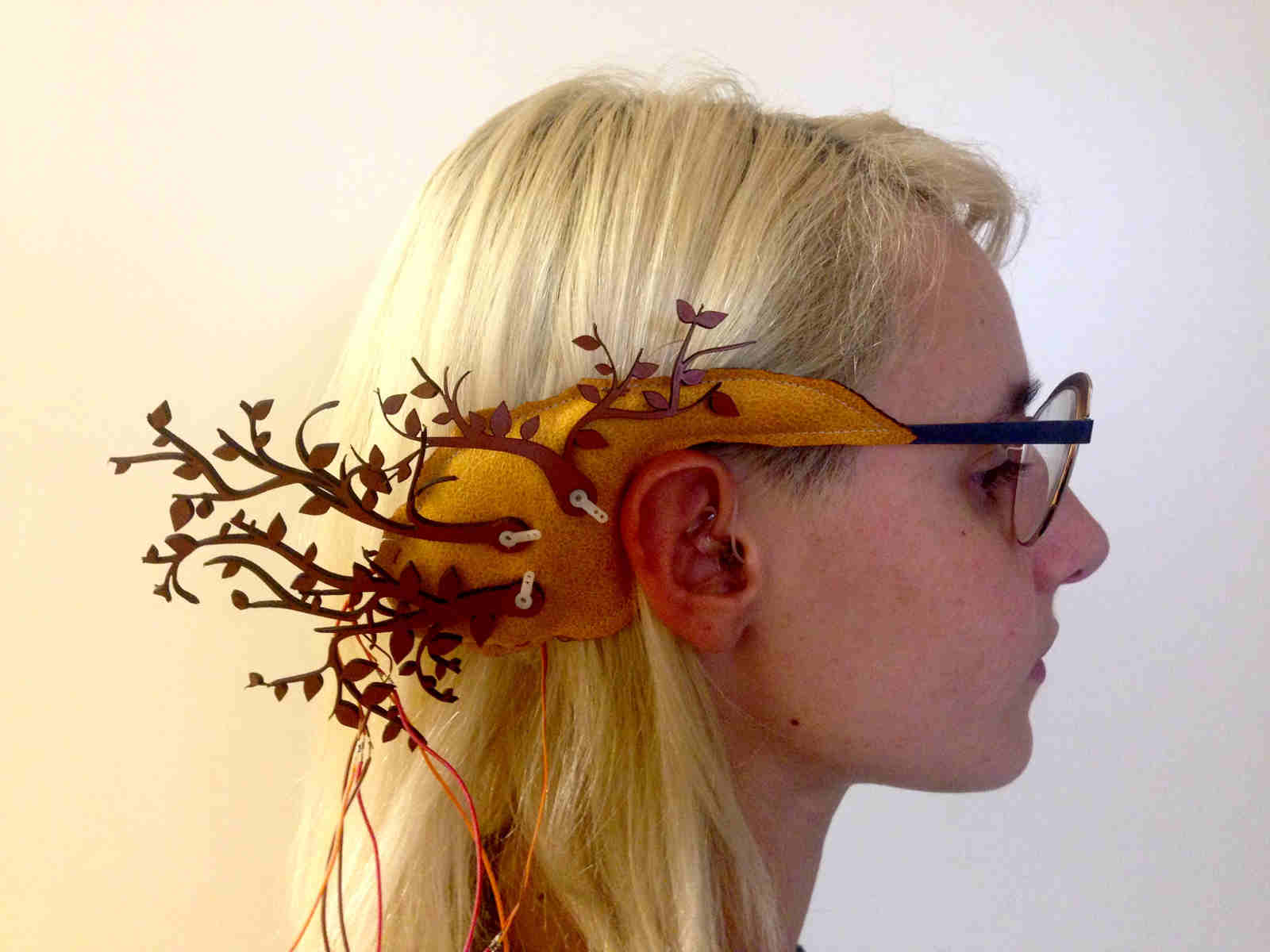
IMG_6175 from Silvia Palazzi on Vimeo.
Update - 4th June 2017
Now that main characteristics and shape of my final project were quite defined, I wanted to implement the prototypes we came out with, focusing on the bobby pin and on the bracelet.
My prototype bobby pin was made simply by three servomotors wired to an Arduino UNO which moved in different ways to make people notice them and consequently pay attention to the person's need and difficulties.
Up to the workshop point, no microphone was integrated but my idea was to make the movement representing sounds around somehow: slower movements for low and calm sounds, quick and sudden movements for higher
chaotic sounds.
I also made a raw version of the bobby pin that helped me in understanding how I could distruibute and integrate all components on it:
Matteo and Simone deserve
credits for the board (Attiny45 + AVRISP + 3 pin headers + 10kΩ resistor and 1nF capacitor)
Starting from this, I decided to start implementing the bobby pin, including also bluetooth module and the microphone.
As for the bluetooth, I would use Sparkfun Bluetooth Silver Mate which I already owned while for the microphone
I prefered to start with SparkFun Electret Microphone Breakout
since simplyfing Neil's electret board would have taken me very long -even if I found nice suggestion in Alisha's final project
documentation- and I didn't want to add potential circuit errors to those I may include in my board sketch.
I think gradual refinement is the best solution to find out problems and debug them. In addition to this, I could maybe also use SparkFun Electret Microphone Breakout's schematic into my board's future versions
I so had a look to the prototype board:
and I realized I could mantain the servo's circuit like that but I had to change ATtiny45 with ATtiny44 because I needed more free pins.
I could now write my BOM:
The board looked quite simple to be designed, because I intended to use AVR ISP header to connect Lipo batteries (servo works at 4.8V, Bluetooth Silver mate at 3.3V and Sparkfun's electret microphone breakout at 2.7V)
and I would connect Bluetooth module to FTDI headers.
By the way I had to see which pins could substitute the servo ones, which was wired to VCC GND and a PWM (PB3) pin of ATtiny45. To help me I referred to datasheets (ATtiny45
and ATtiny44) and to the following images:


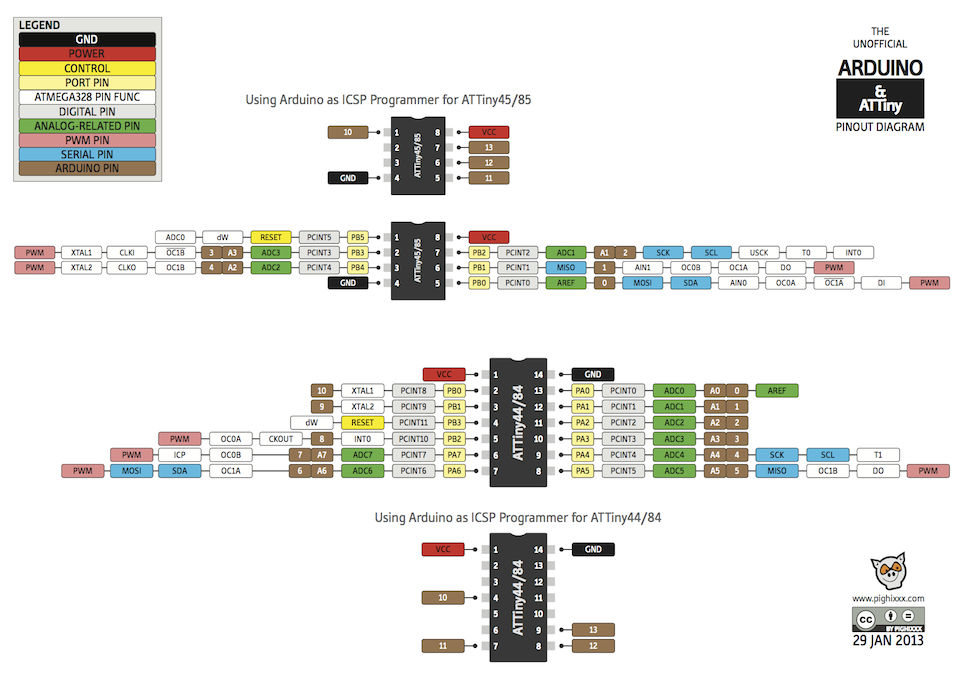 Anyway, switching from a pinout to the other and the fact that both the servo and the SparkFun Electret Microphone Breakout had three
pin to be wired (even if the second would have been wired to the ISP header only after the bpard was programmed while the Bluetooth module would have used
FTDI headers in the same moment in which the Moon and the Sun would have been in such a position that the stars would have been in support of my board functioning - I mean, I tried to
manage too many factors for my tiny brain) and and I wrongly connected it to Attiny44's PA3 which is not PWM one (Don't ask me why, I know, I'm stupid).
Anyway, switching from a pinout to the other and the fact that both the servo and the SparkFun Electret Microphone Breakout had three
pin to be wired (even if the second would have been wired to the ISP header only after the bpard was programmed while the Bluetooth module would have used
FTDI headers in the same moment in which the Moon and the Sun would have been in such a position that the stars would have been in support of my board functioning - I mean, I tried to
manage too many factors for my tiny brain) and and I wrongly connected it to Attiny44's PA3 which is not PWM one (Don't ask me why, I know, I'm stupid).
To add pin headers to my board I used this library, which is very rich and contains loads of elements and to edit png files to be fed to fab modules
I followed my docu's steps. Fortunately,
the C code I used during the workshop could suit
that pin anyway because it worked with SoftwareSerial, which doesn't require the pin to be PWM to work with a servo.
Hair Piece
Software
In my project, the hair piece included slave BT module, therefore my Arduino code is the following:
Hardware
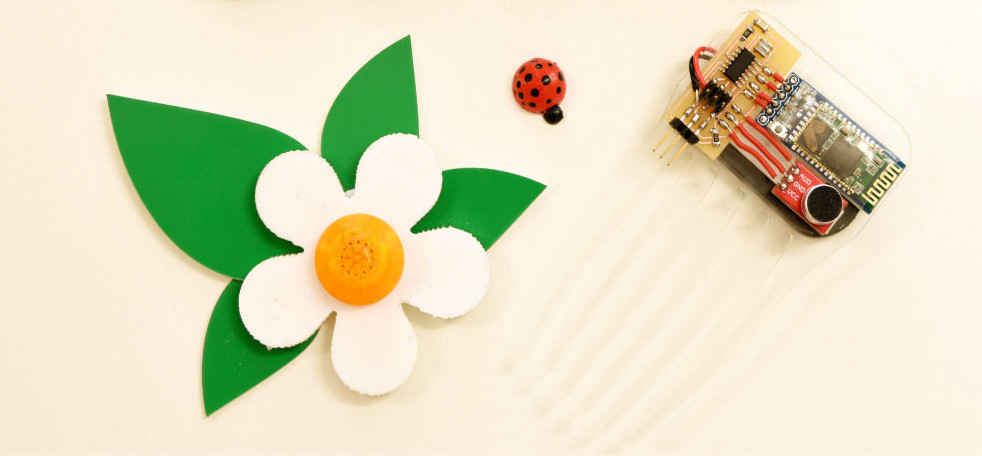 The hardware of the hair piece is made by:
The hardware of the hair piece is made by:
- Sparkfun's Electret Breakout to use which I referred to this tutorial;
- Bluetooth HC05 module (see week15 for BT setup and working);
- the board I made for BT, mic, battery ( and potential future servo);
- 2x 3V Lipo batteries
The board
As far as I came in latest update, everythng looked quite fine except for:
- lack of resistor pull-up
- external 20MHz clock
- wrong wiring of pins
I therefore tried to redesign the board.
Unfortunately, even this time, I got another error that lead me to a new (the fifth maybe) flying board...incredible, isn't it?! I don't want to
find excuses but this time it didn't depend on me forgetting RST or another ISP headers pin, but it was because of Eagle. In fact, sometimes when I work
with this software on Linux, it happens that there are issues in netting and green line don't fit pins properly (I tought it depended on grid dimensions
but also other people I worked with faced with the same problem of jumping-away-from-pin netting or errors like the following one):
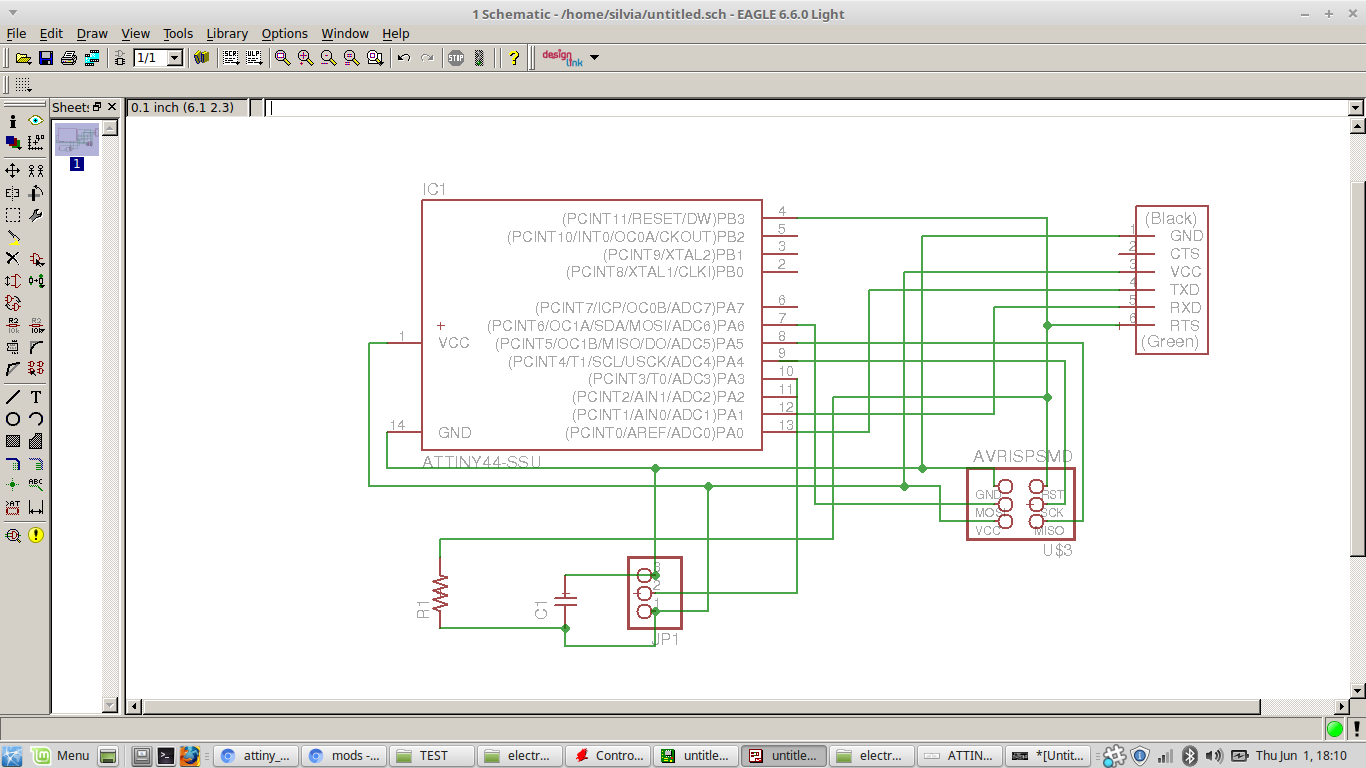
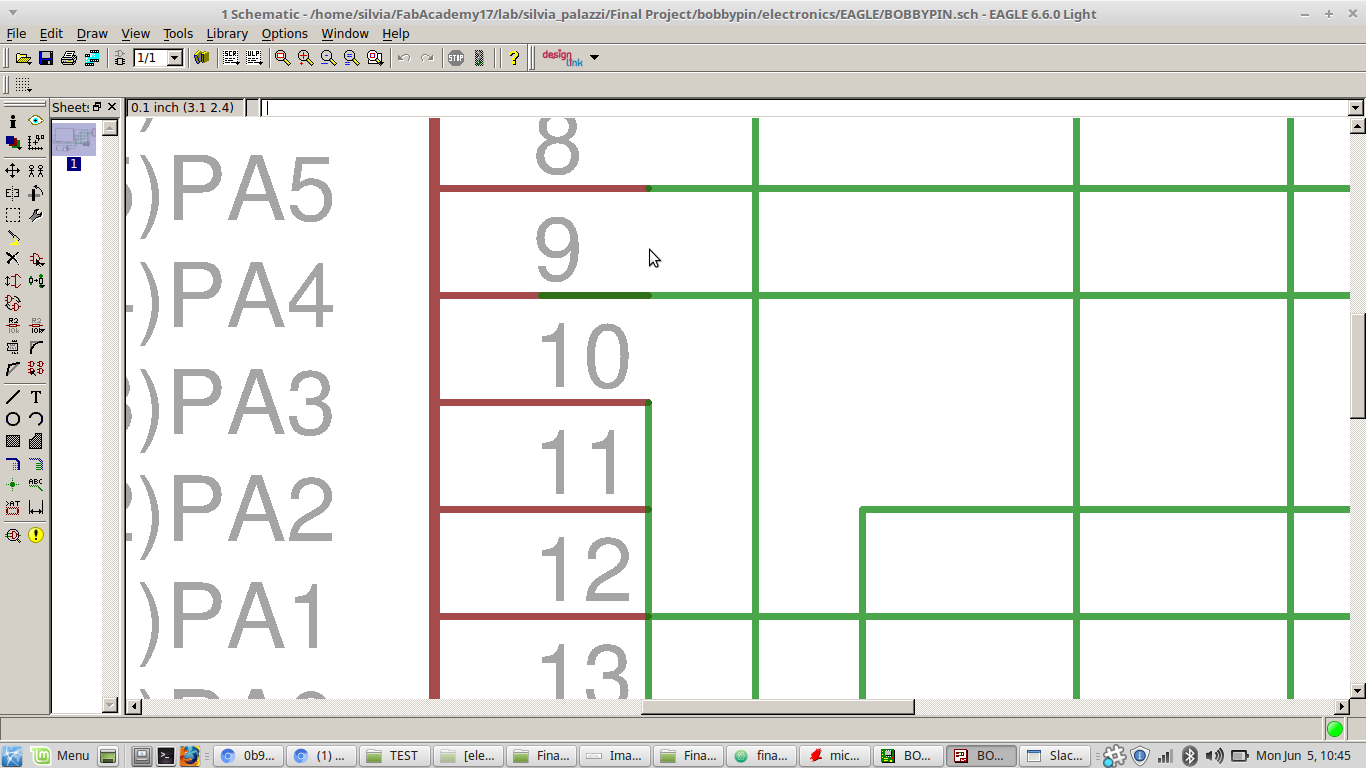 This kind of error doesn't show the usual yellow line on Eagle's board part, since pins doesn't look like they are wired.
This kind of error doesn't show the usual yellow line on Eagle's board part, since pins doesn't look like they are wired.
Unconscious of this error I continued my work, exporting the png file and editing it with GIMP as explained in week6:
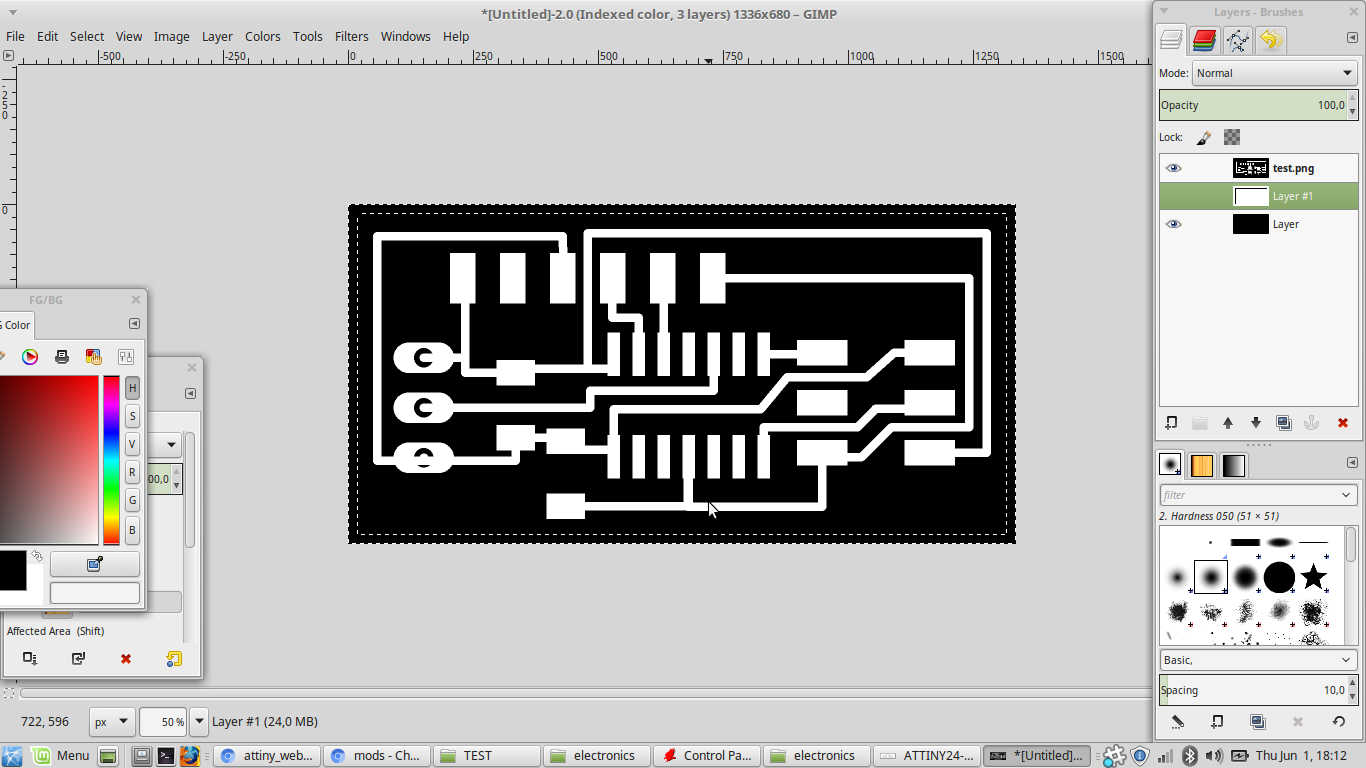
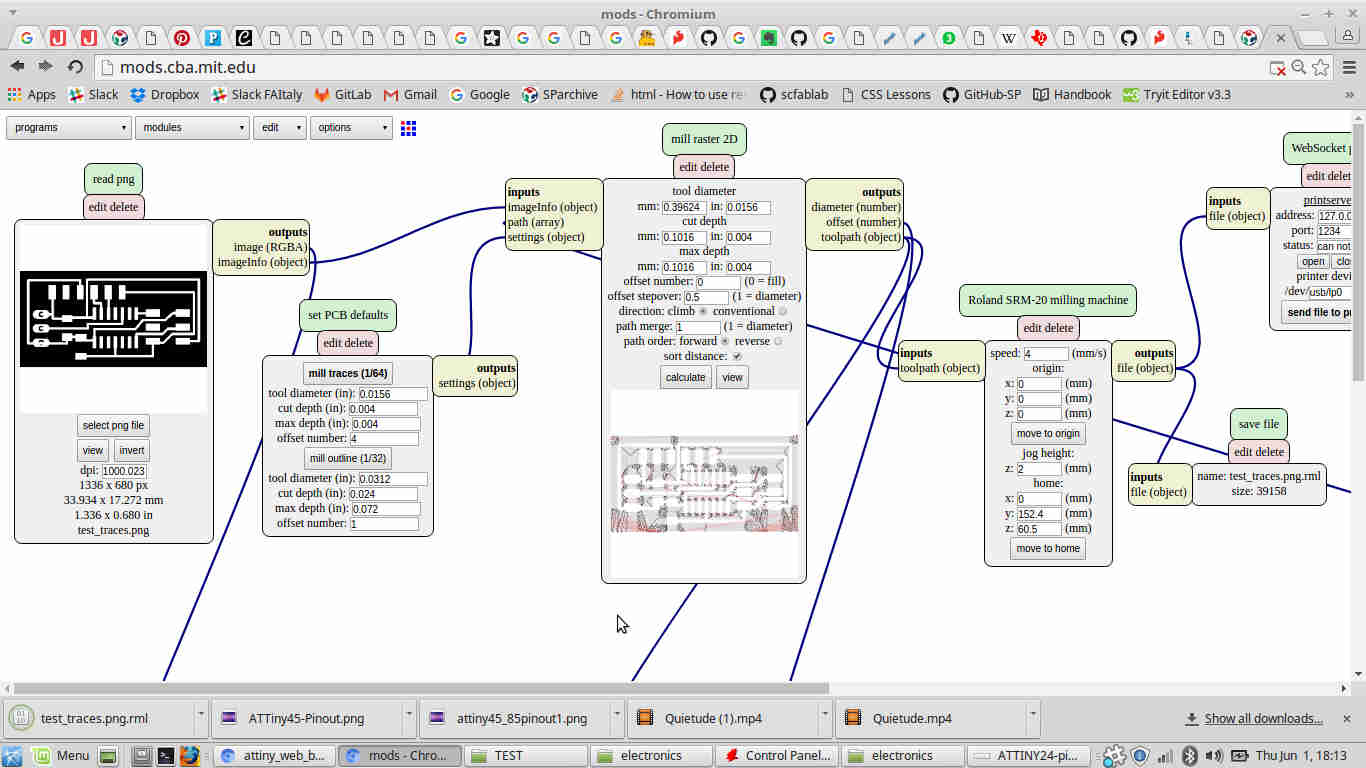
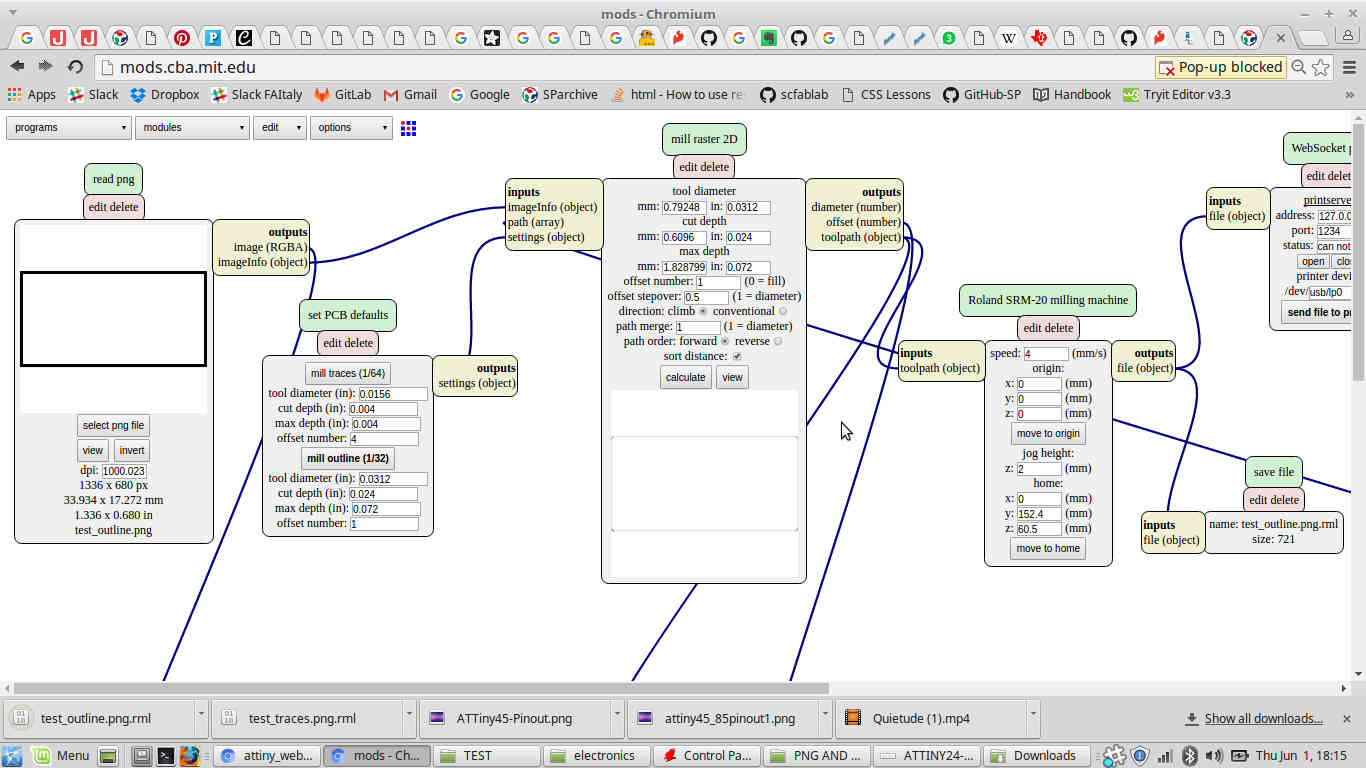 After many errors in uploading a code with the FabISP I saw the error and I fixed the board:
After many errors in uploading a code with the FabISP I saw the error and I fixed the board:
It now correctly worked and I used it to program the bluetooth modules (I'll explain that later on) but I needed a fine board to present it on my hair pin.
I there fore fixed the schematic:
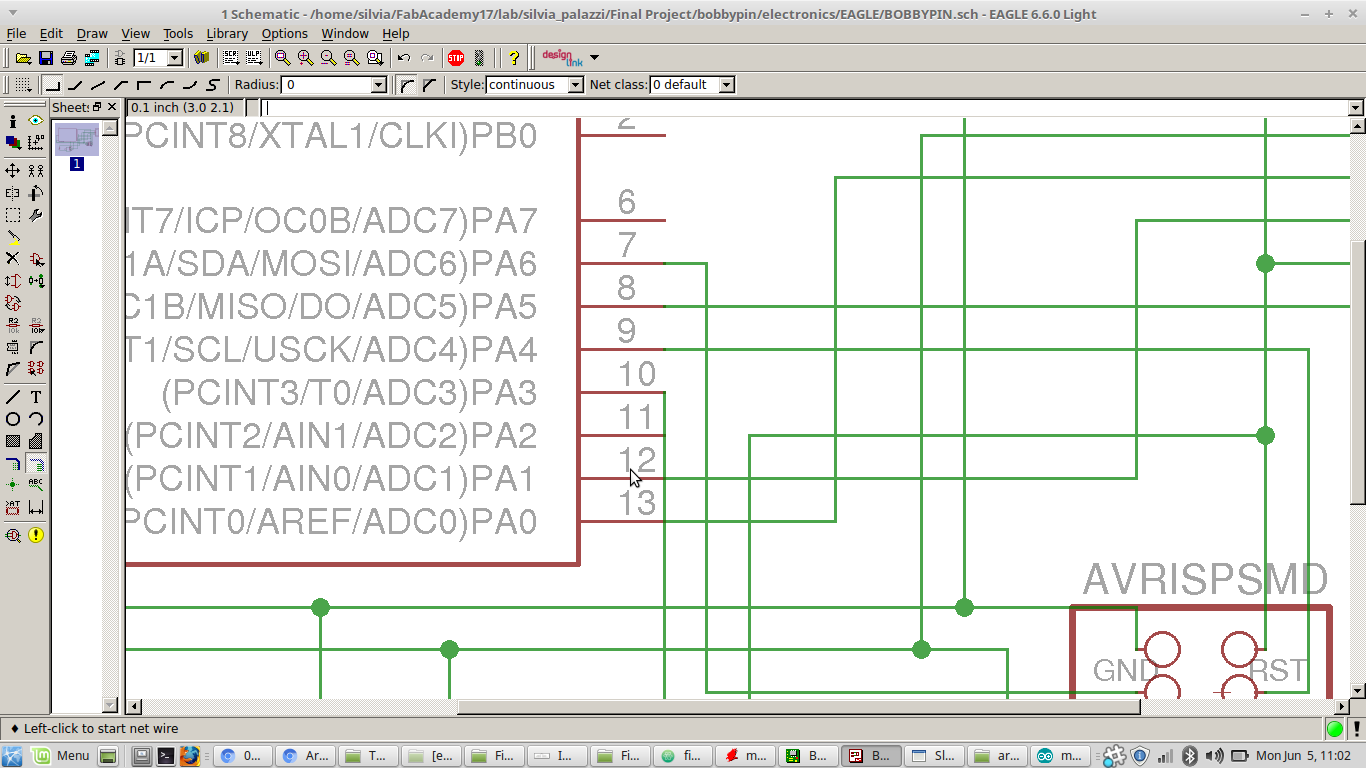 And I changed a bit tracing pattern (including pull-up and external clock):
And I changed a bit tracing pattern (including pull-up and external clock):
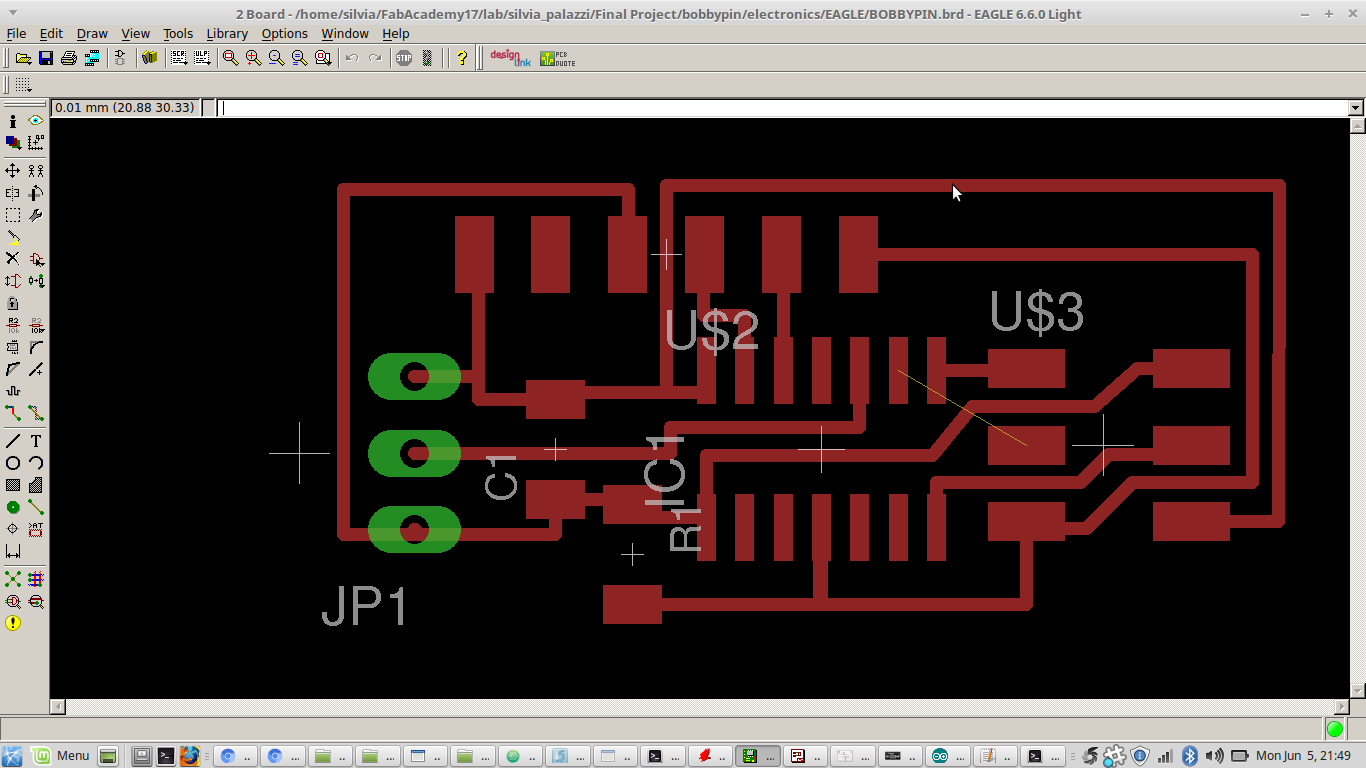
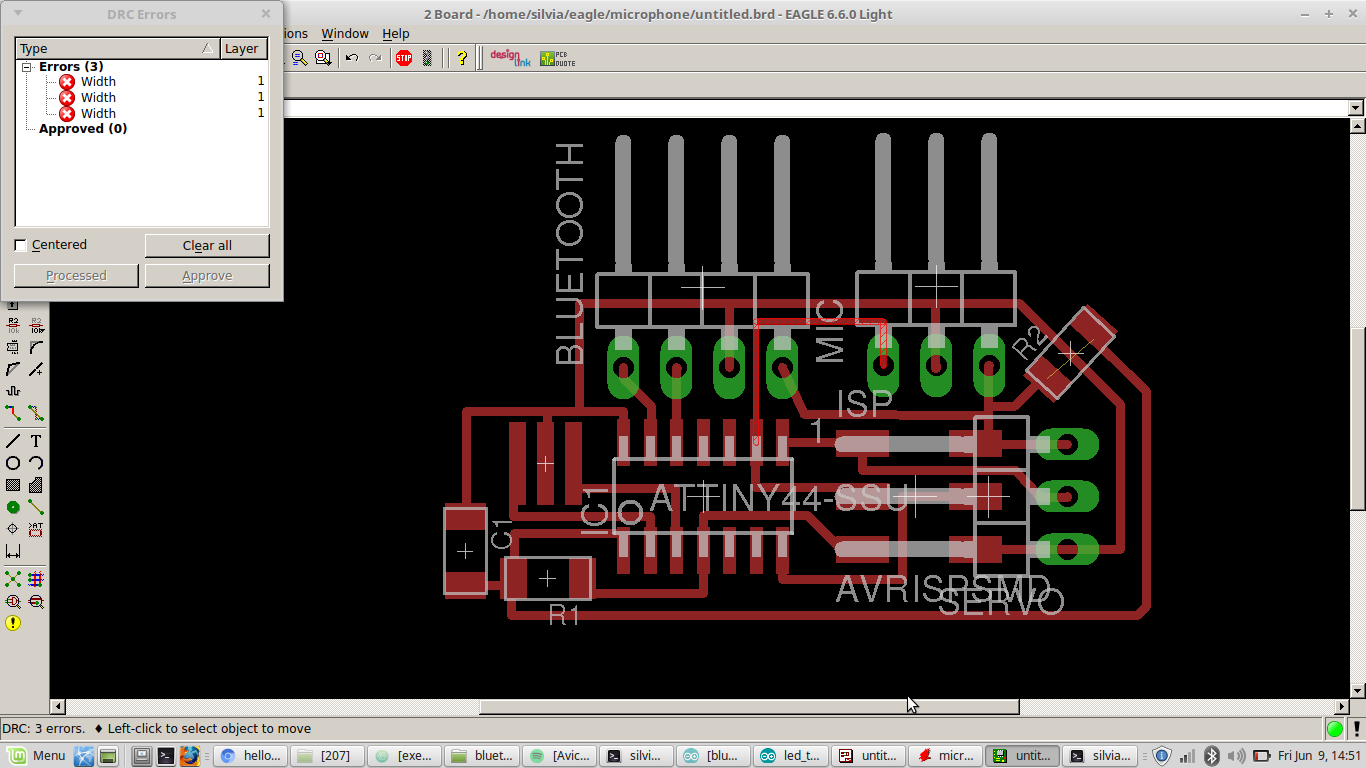 In the end it looked like it is in the picture at the beginning of this paragraph:
In the end it looked like it is in the picture at the beginning of this paragraph:
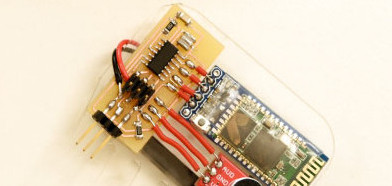 NB: I intentionally left servo headers even if by now I chose to put apart that output device because the micro servo
I wanted to use had too randomic behaviours which didn't take consideration of what the code said :/ - I didn't receive nice anwers from this, this or this tutorial
NB: I intentionally left servo headers even if by now I chose to put apart that output device because the micro servo
I wanted to use had too randomic behaviours which didn't take consideration of what the code said :/ - I didn't receive nice anwers from this, this or this tutorial
Bracelet
For the bracelet I took inspiration from Adafruit, both for circuit (to whom I added the BT module) and for design.
Software
The bracelet contains the master BT module, which gets data from the slave following this code:
As you see, codes are very similar, the only difference is that slave module reads from sensor and writes in serial while master module read from serial port and activates the output device.
Hardware
 The hardware of the bracelet piece is made by:
The hardware of the bracelet piece is made by:
- Braino board;
- Bluetooth HC05 module(see week15 for BT setup and working);
- vibration motor;
- 2x 3V Lipo batteries
Braino
Everything about Braino can be found in week10.
Final wiring of all components looked like this:
Manifacturing and Design
As for design, I tried to implement a bit Adafruit example's one, both because I didn't like electronics
to be that open and also because I wanted a more refined shape. Therefore, according to floreal shape I gave to the hair pin, I chose a nice leaf shape from an internet picture
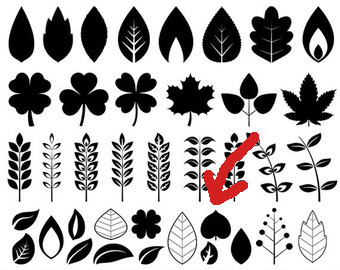 and edited it with Illustrator as I did for the bobby pin, gaining the following result:
and edited it with Illustrator as I did for the bobby pin, gaining the following result:
FOTO
Even if from the picture is not that clear, there are some red lines along the engraved leaf contour so as to make them electronics' shutters.
The different shapes are for closing leaves, those to which I sewed a little button:
Putting everything together, the bracelet looked like this:
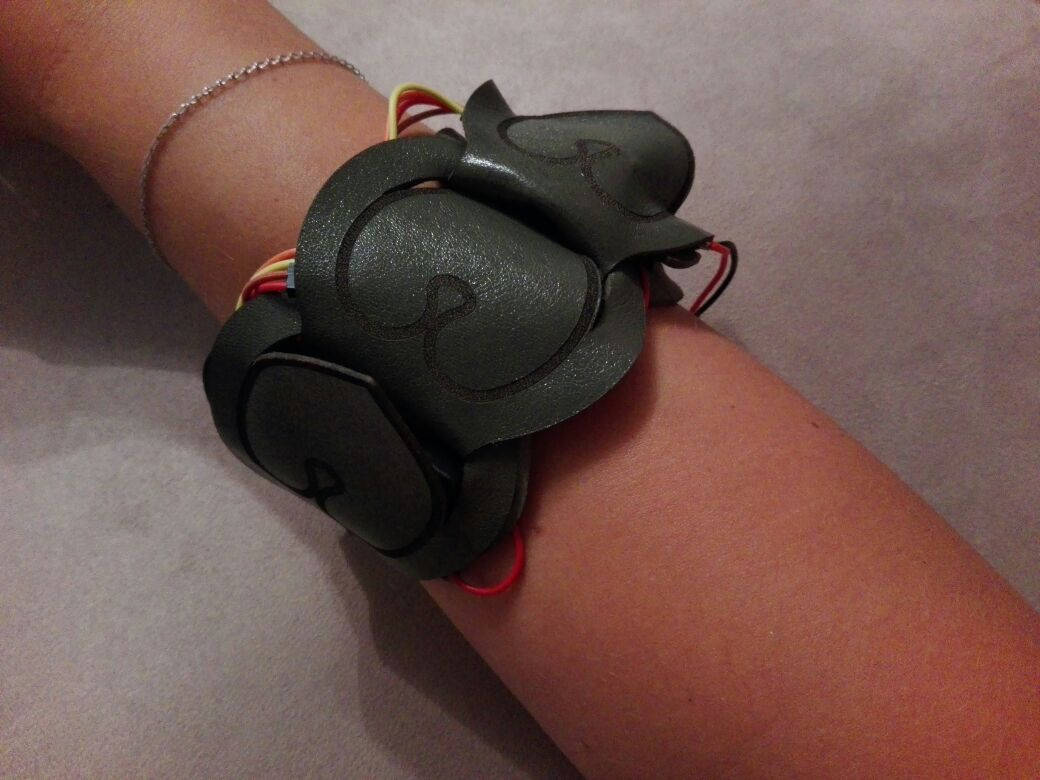 One of the future improvements would be to sew all components on the leather so as to avoid all that wiring ;)
See index page to have a better idea of the functioning with the video I made.
One of the future improvements would be to sew all components on the leather so as to avoid all that wiring ;)
See index page to have a better idea of the functioning with the video I made.
Future Improvements
My project by now look more like a prototype than something someone would really wear. But I've already tought about improvements to make:
- change bracelet design so as to be worn in different ways
- add two more motors to the bracelet
- include an interface for the bracelet to set in which way is worn and accord vibrating pattern to that
- refine hair pin design
- fix microphone noisy acquisition
- sew components onto the bracelet with conductive wire
Questions
Some questions about my project planning, developing and evaluation can be answered here. If they're not, I'll be happy to answer you - you contact me using the info you find in the contact page
Download
All files related to my final project realization can be found HERE


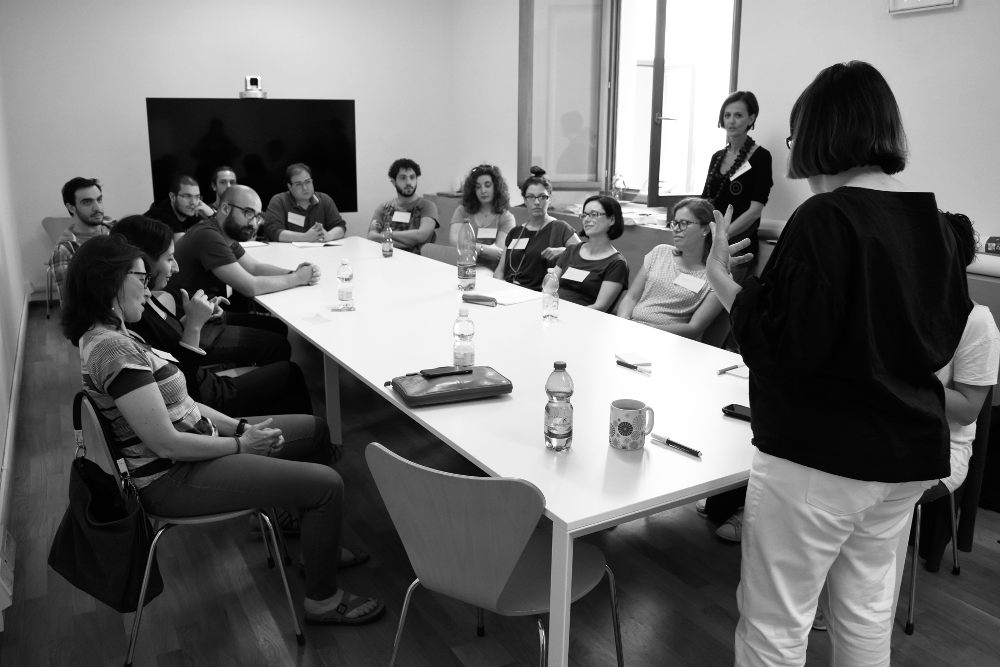


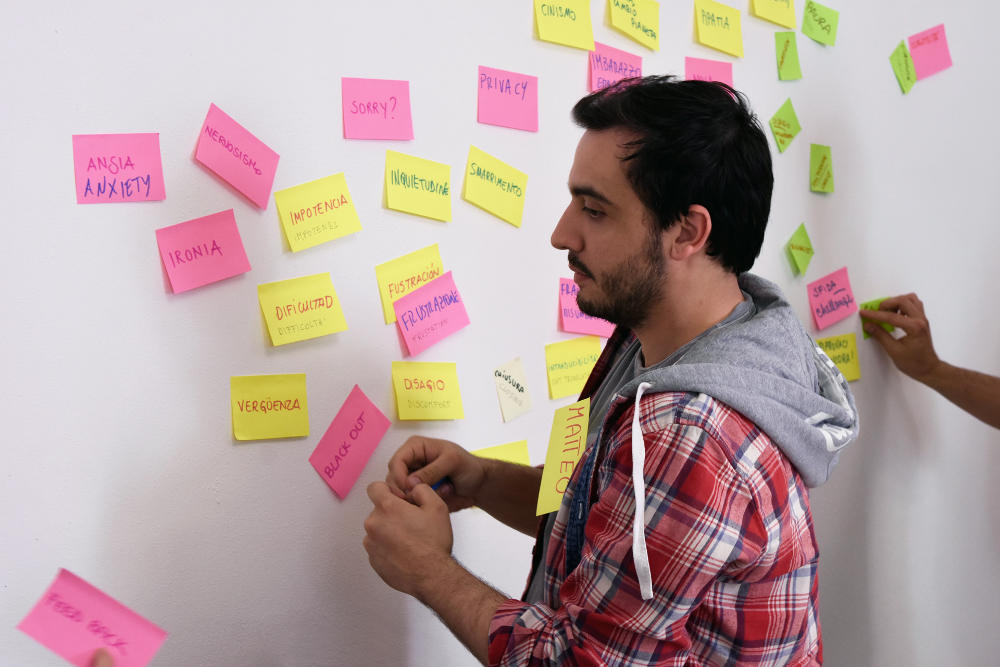


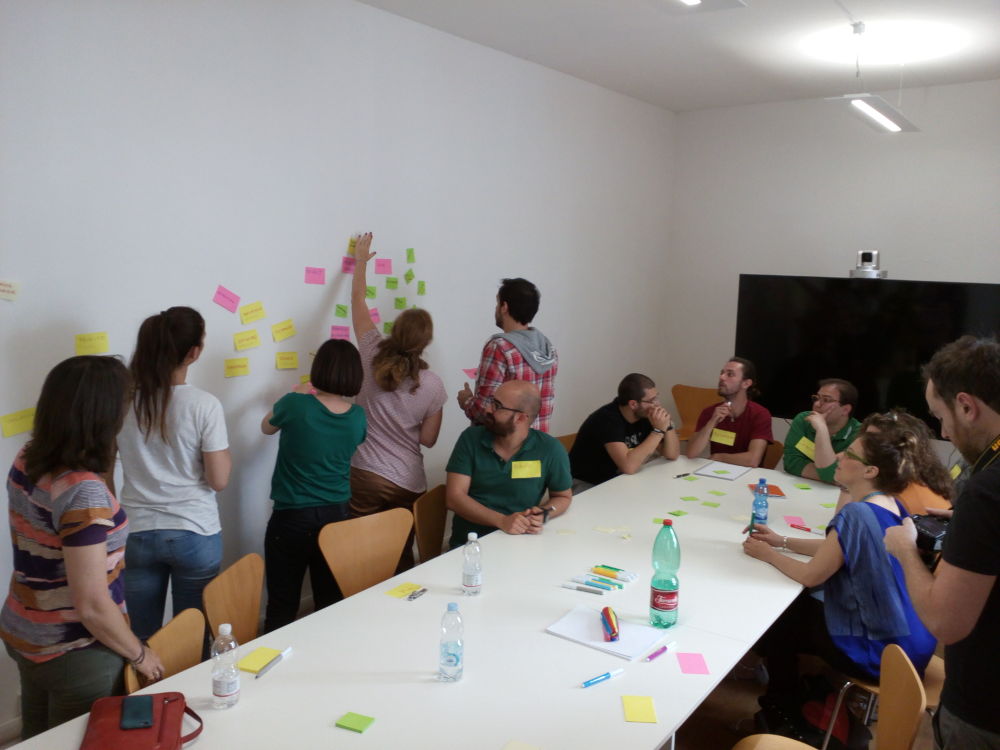
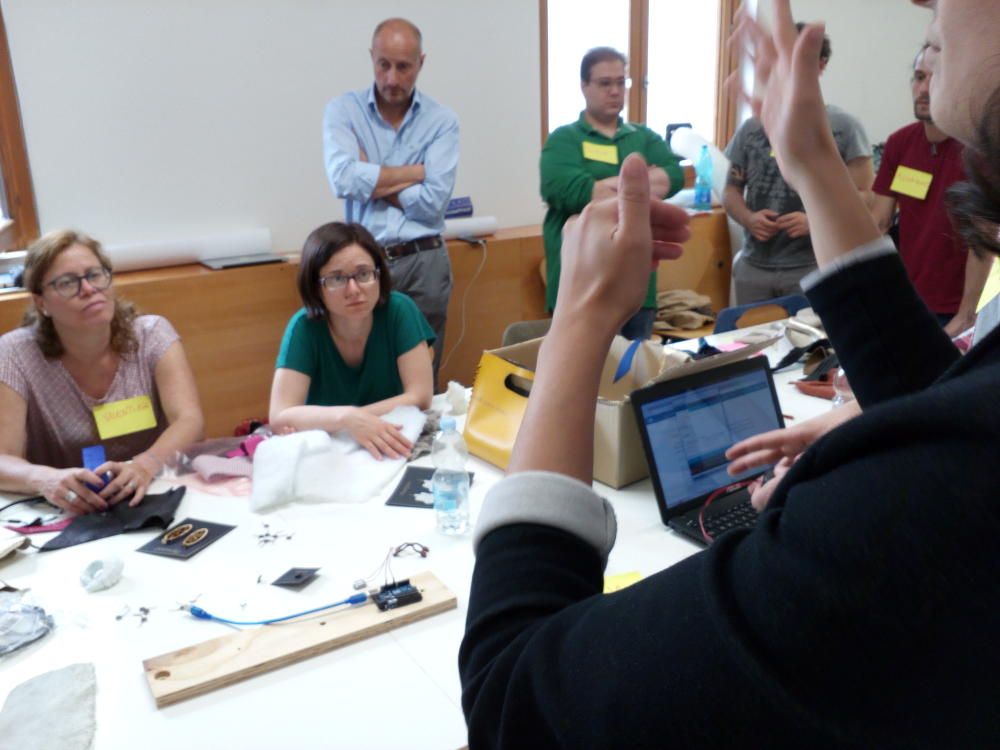
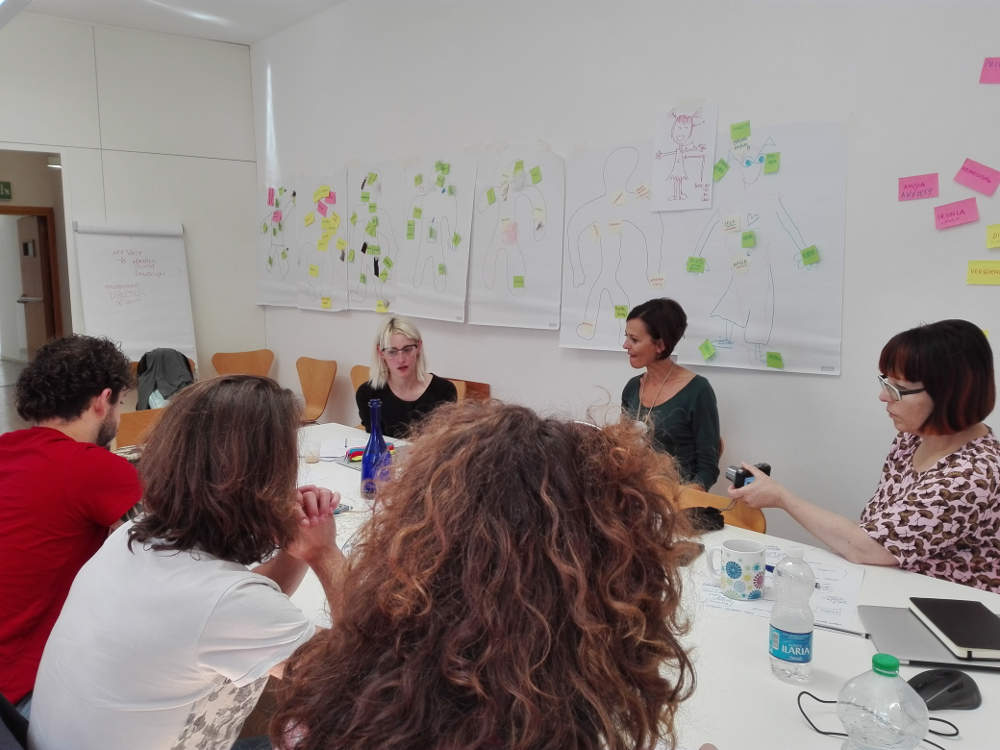
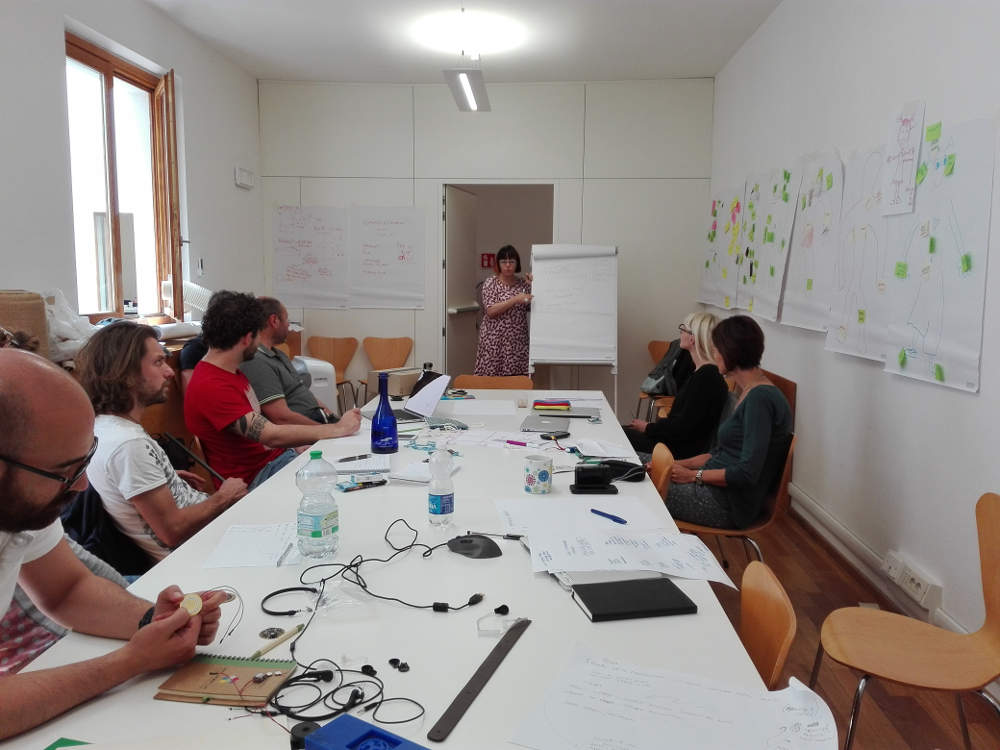
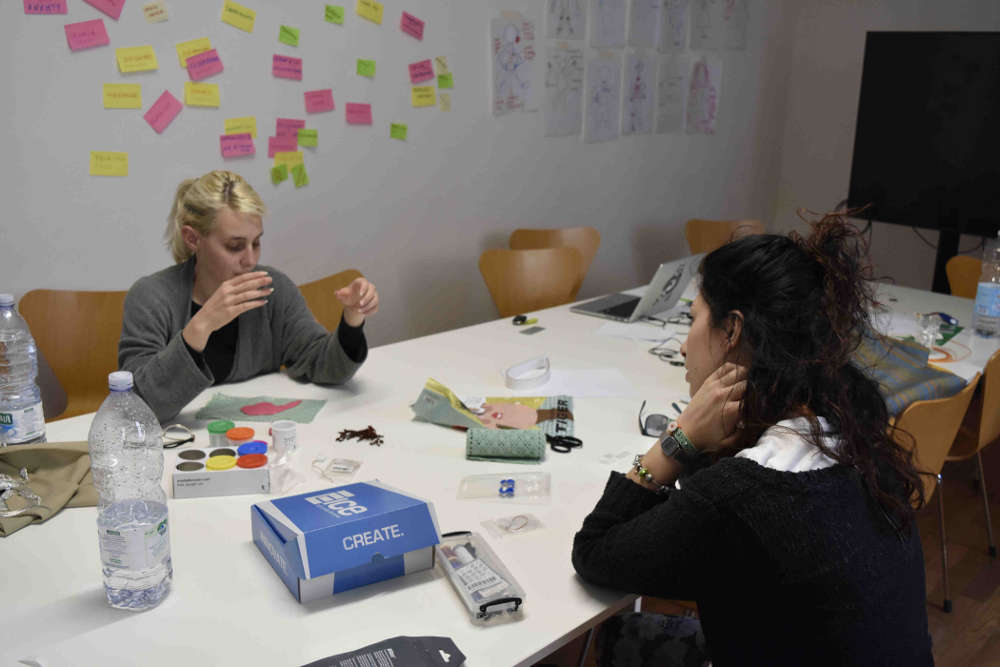
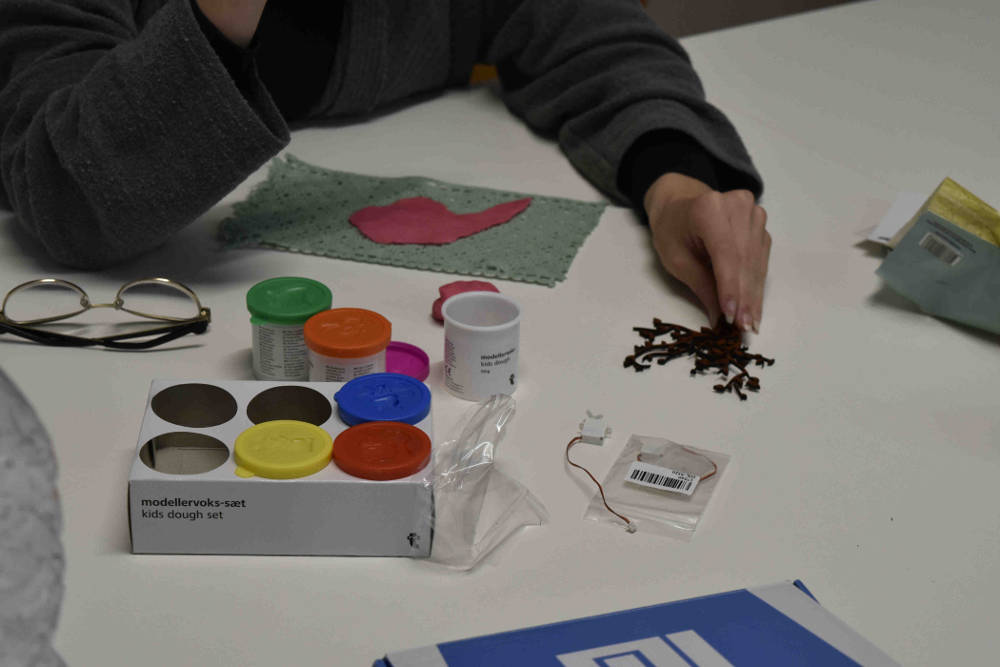
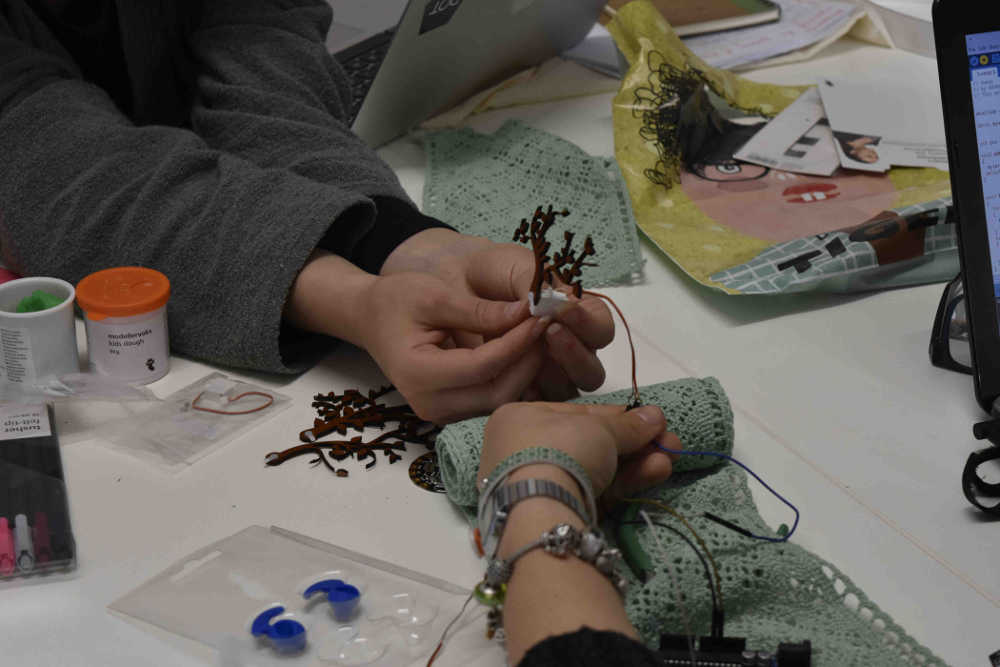
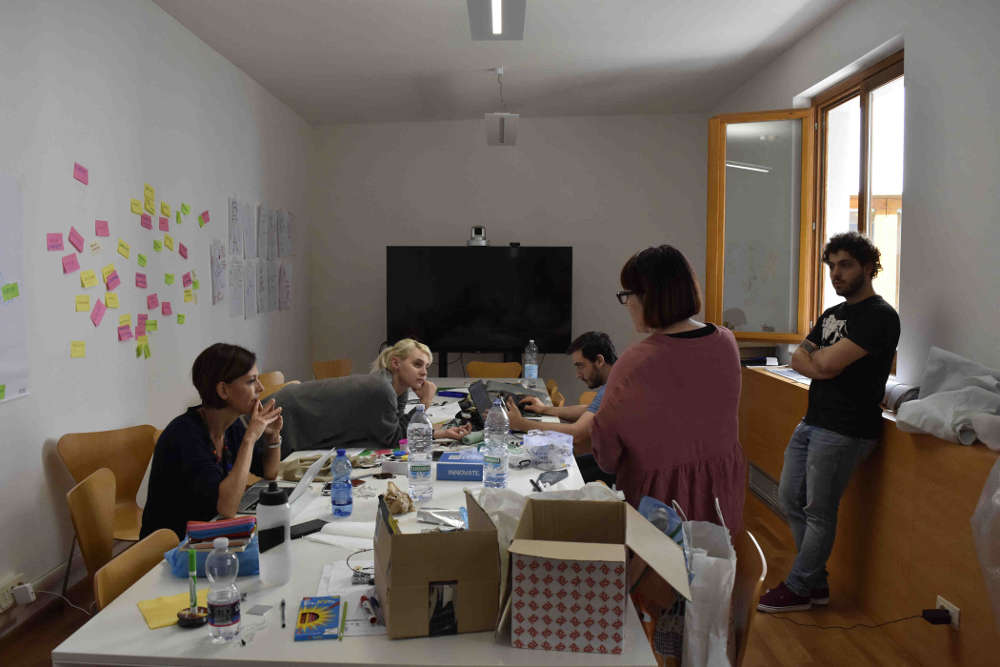
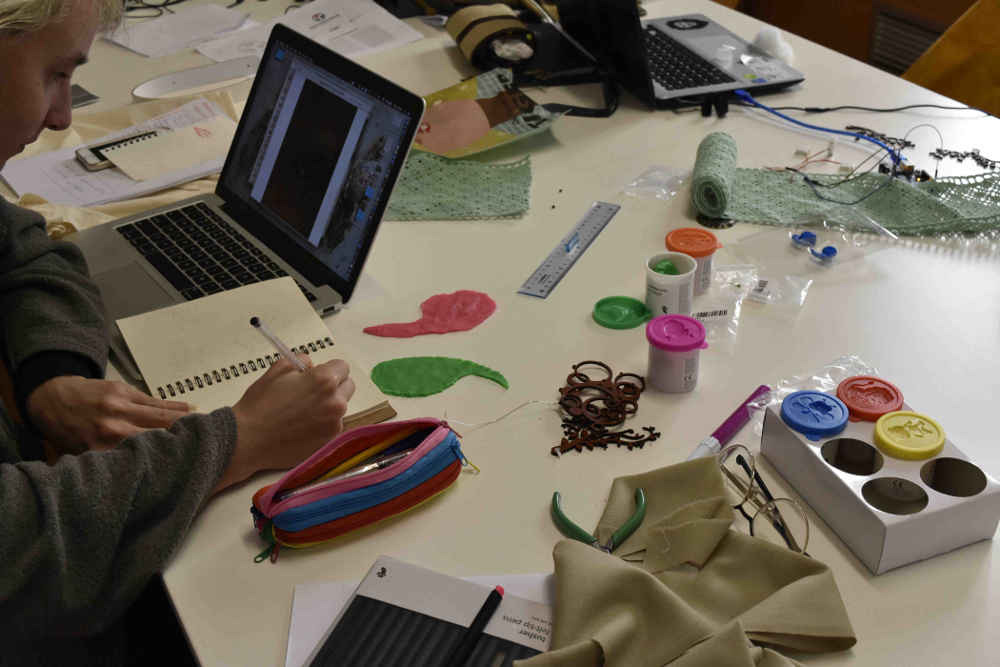
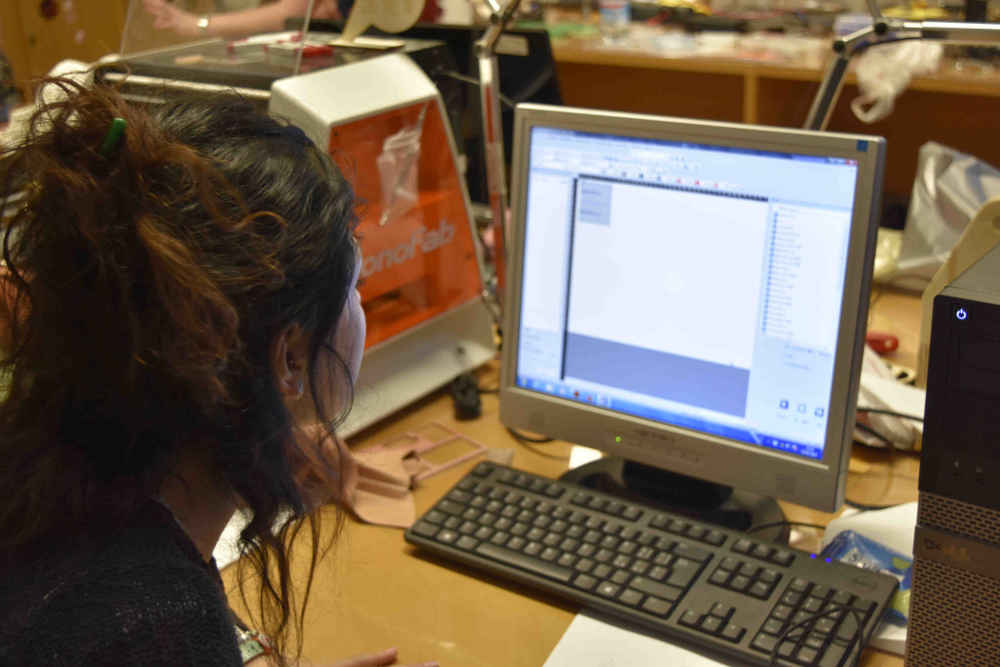
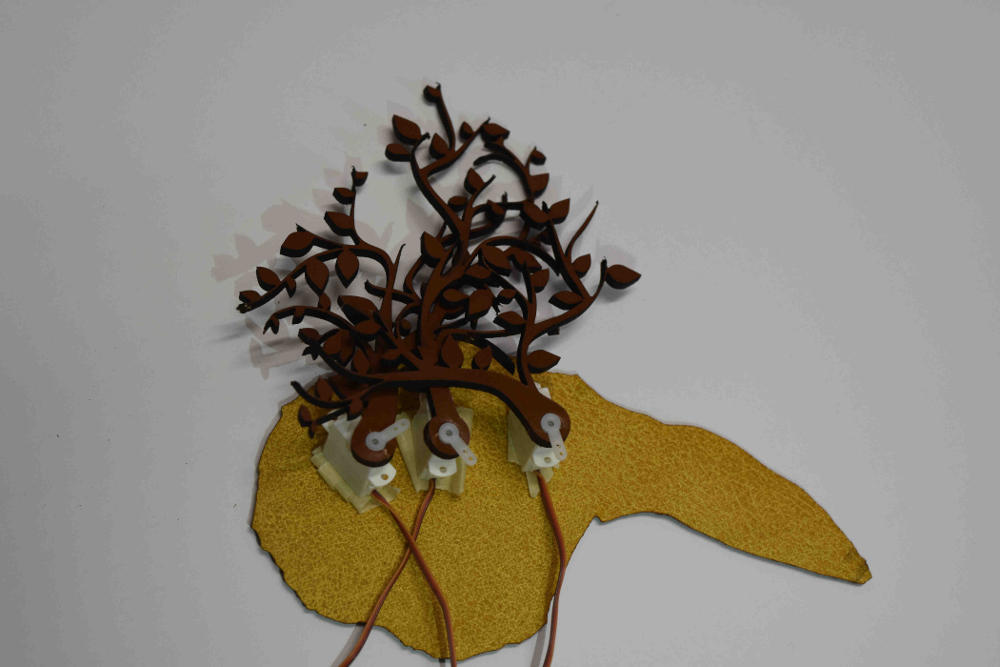

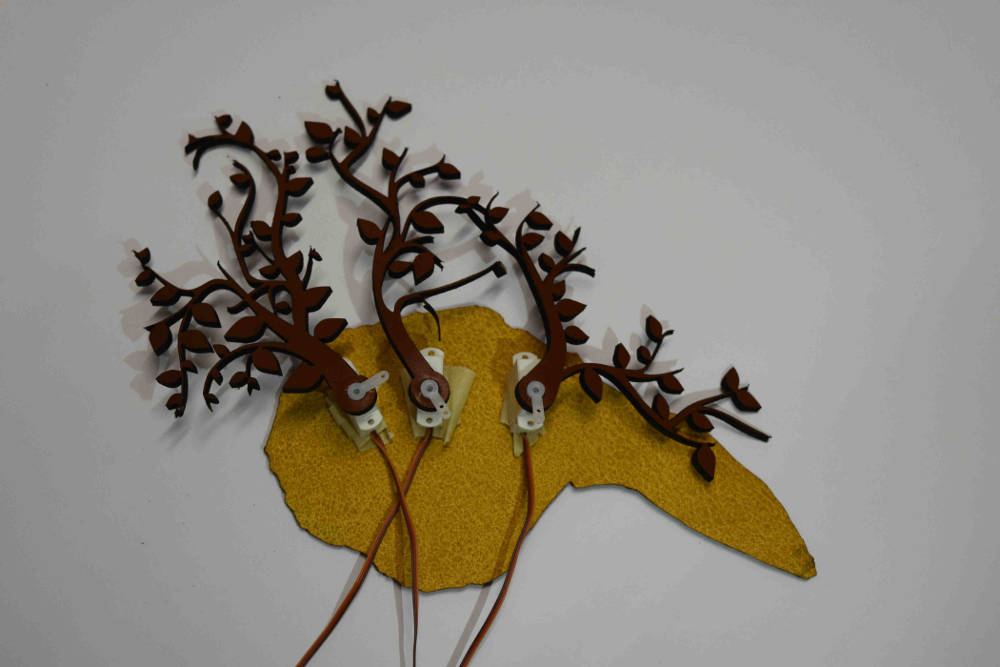
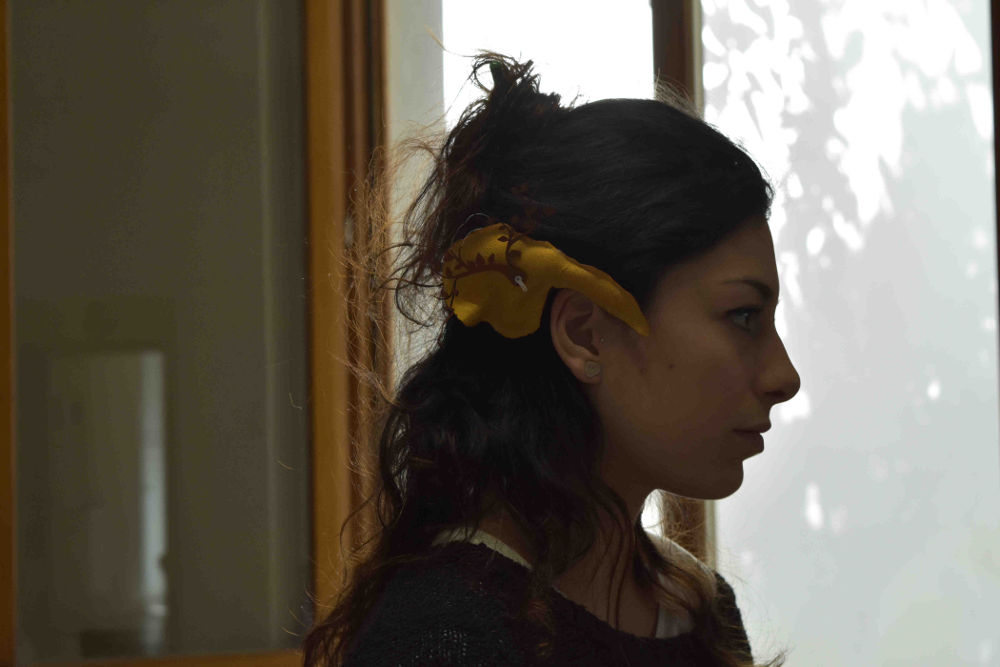
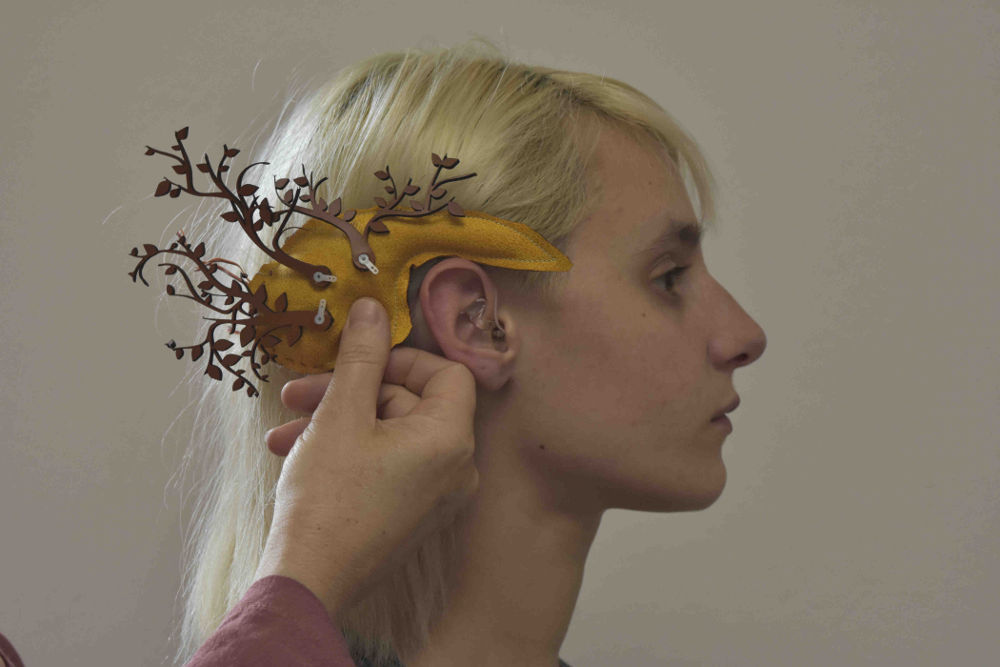
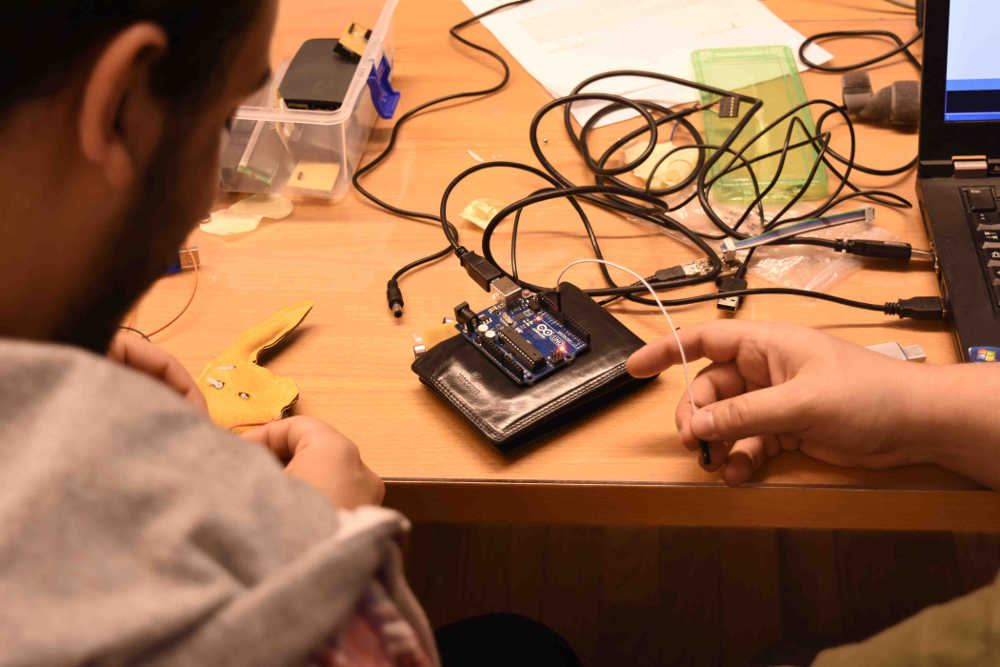
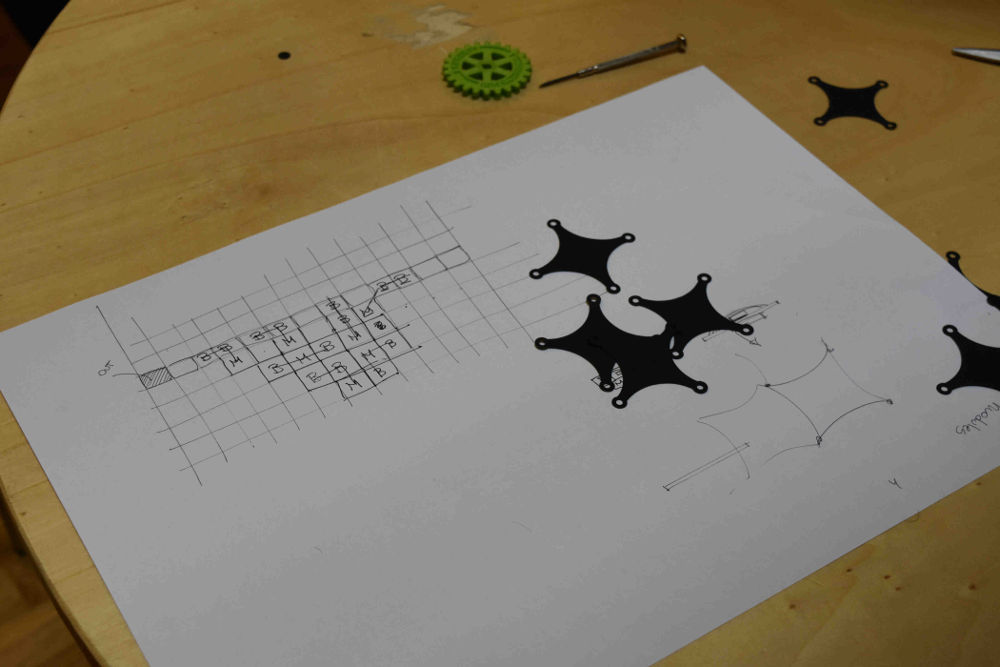
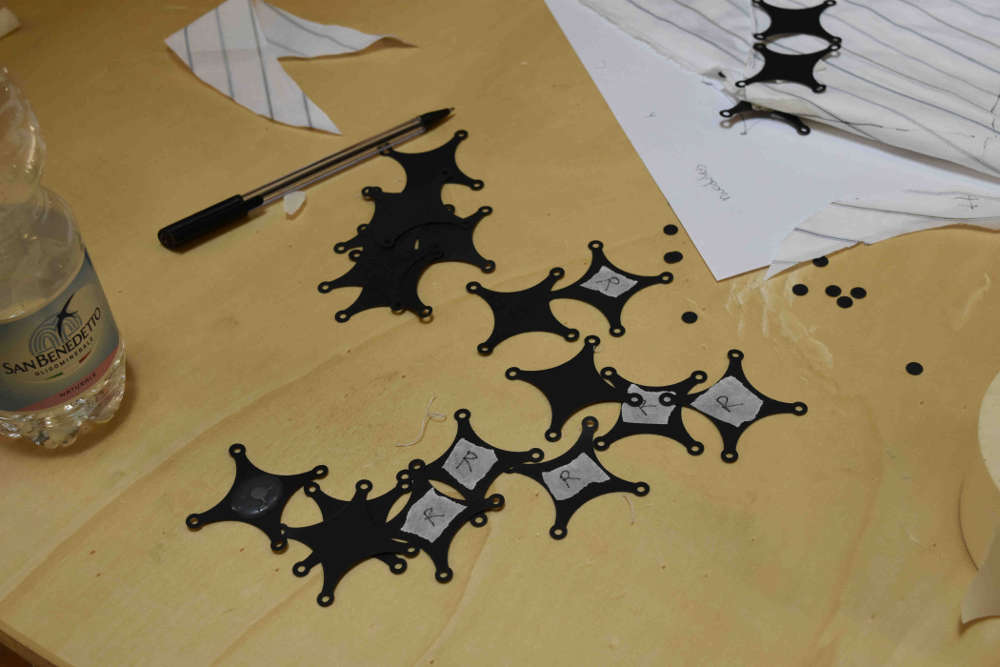
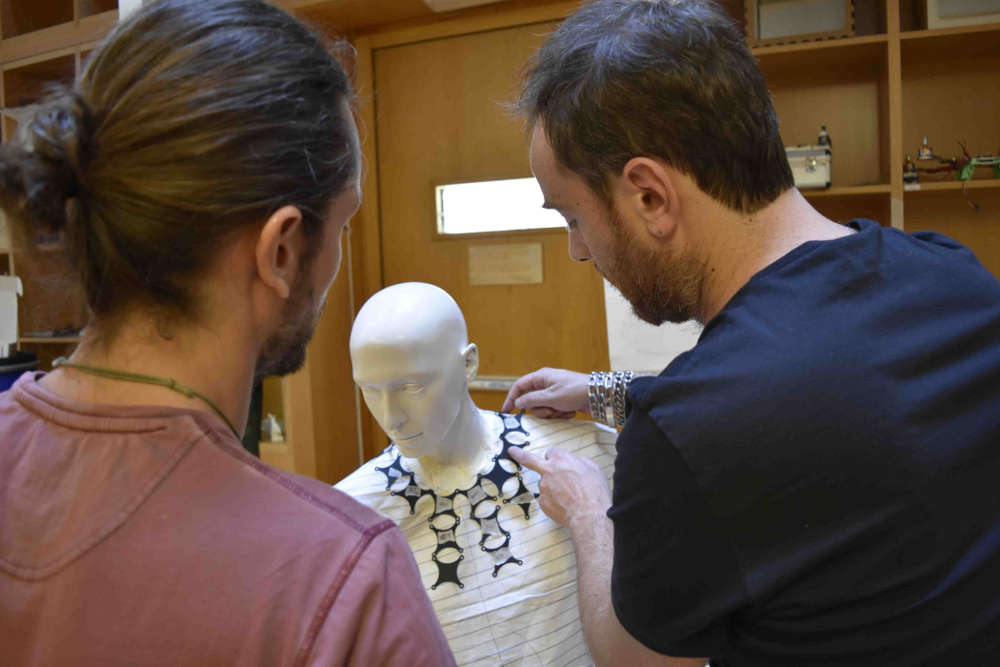
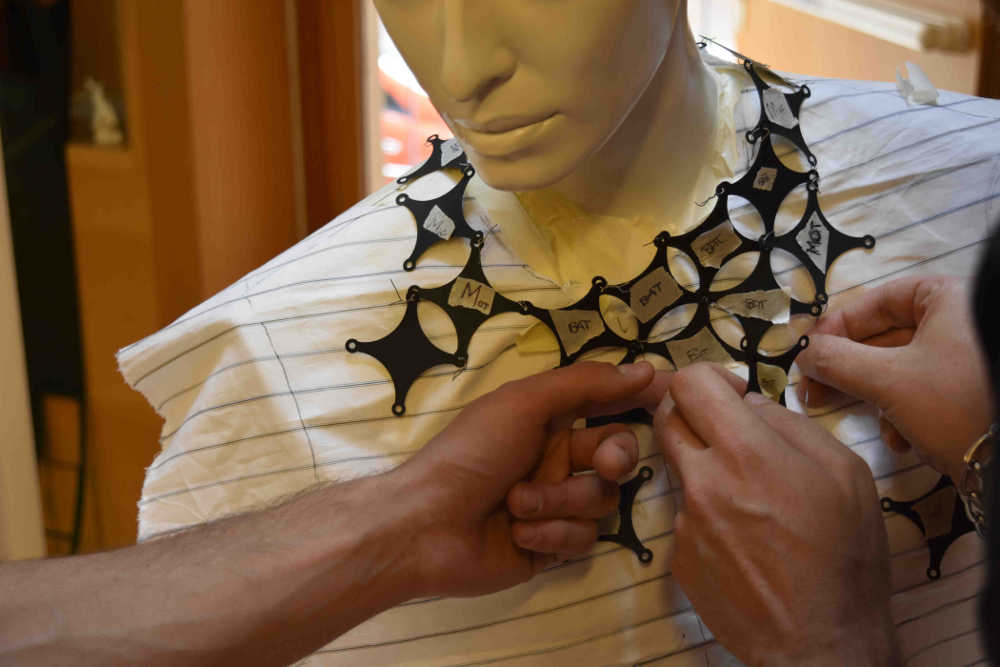
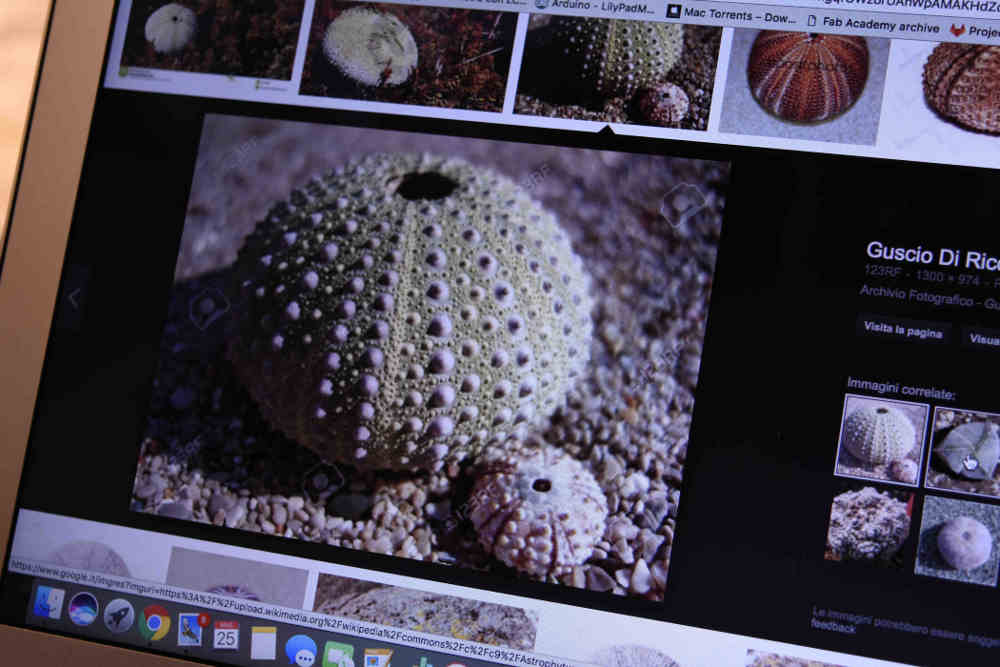
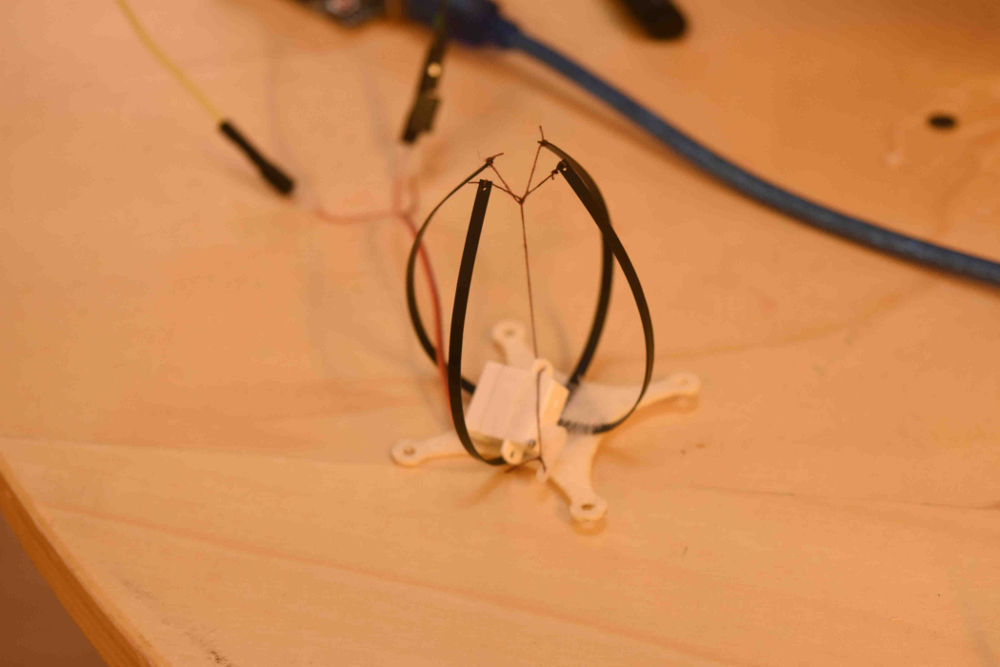
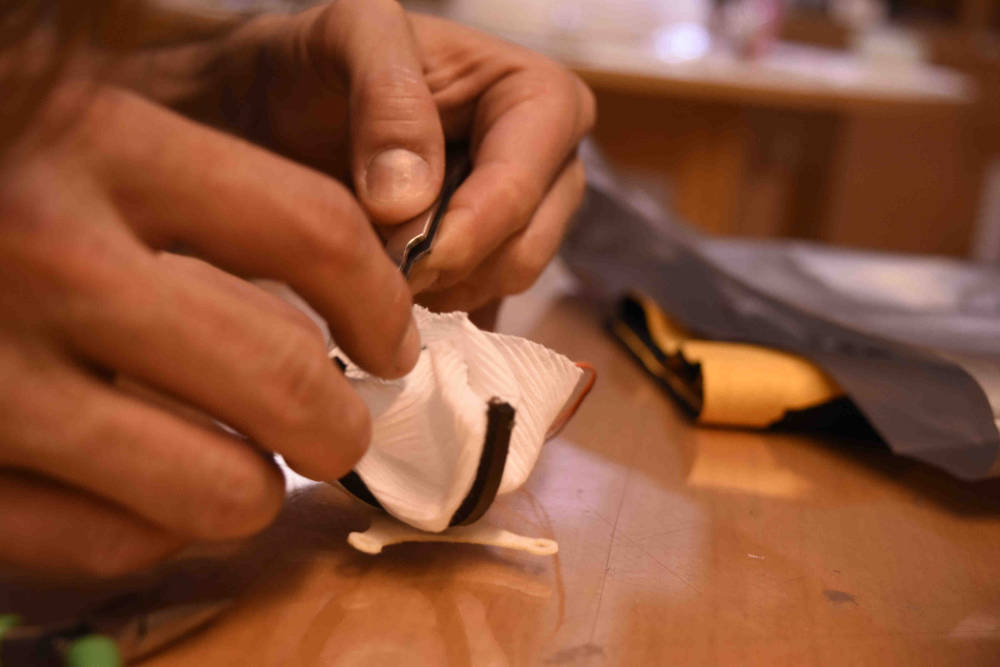
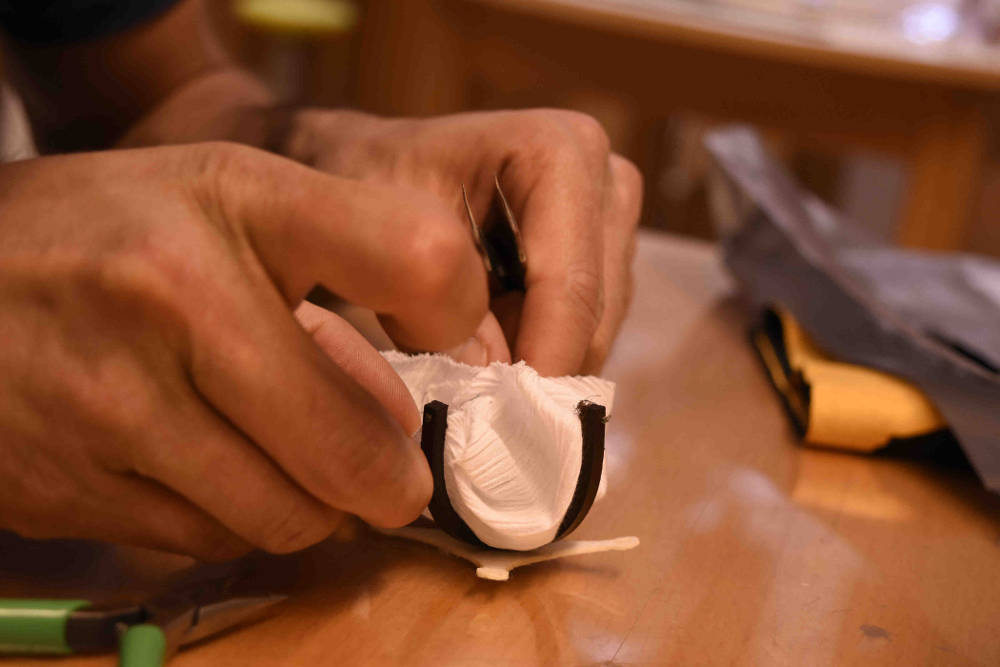
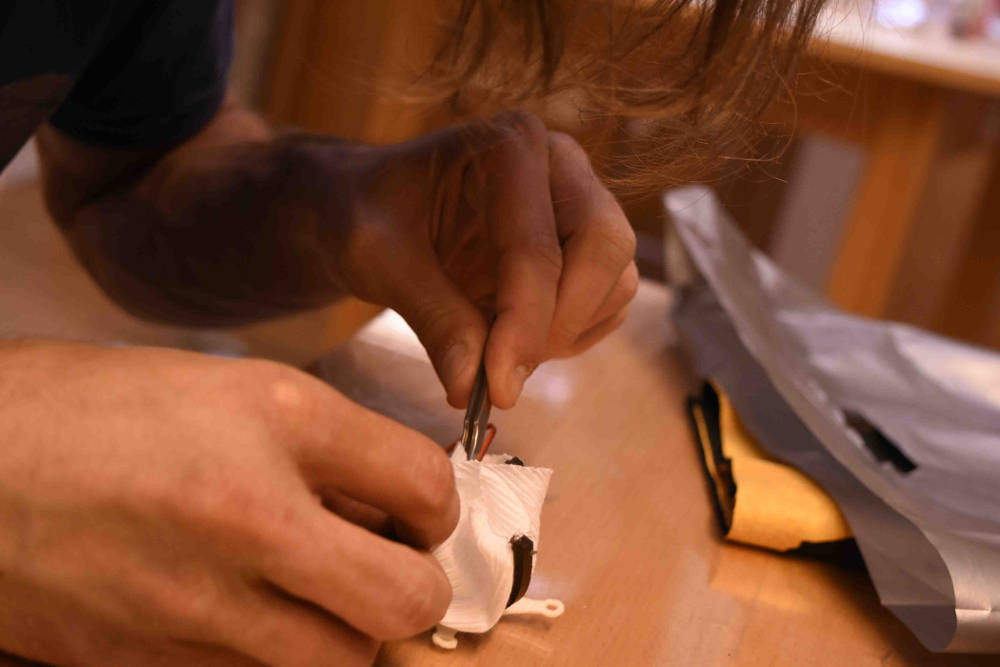
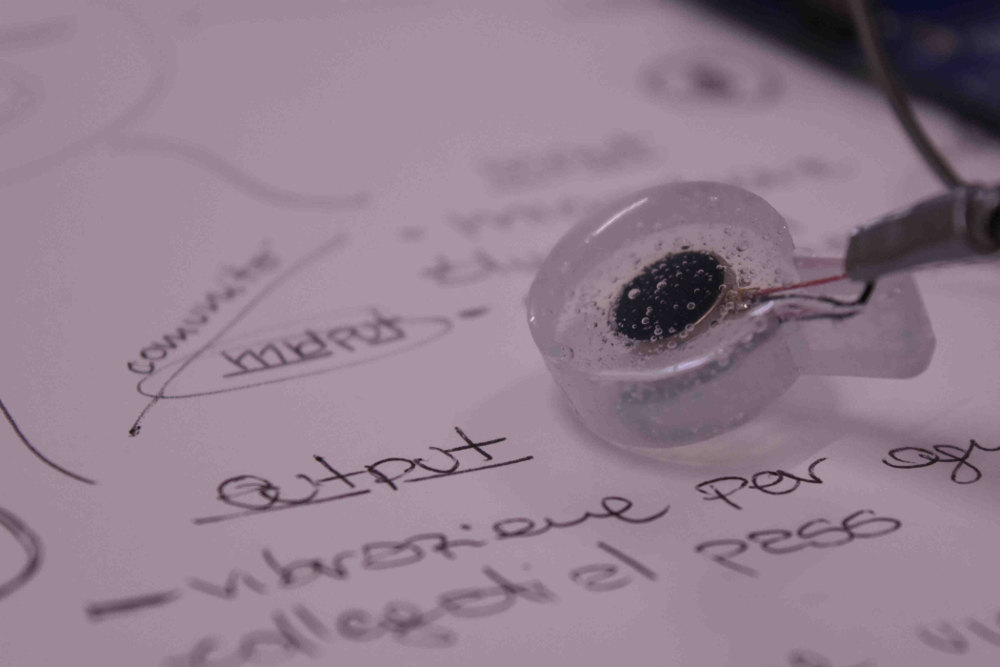
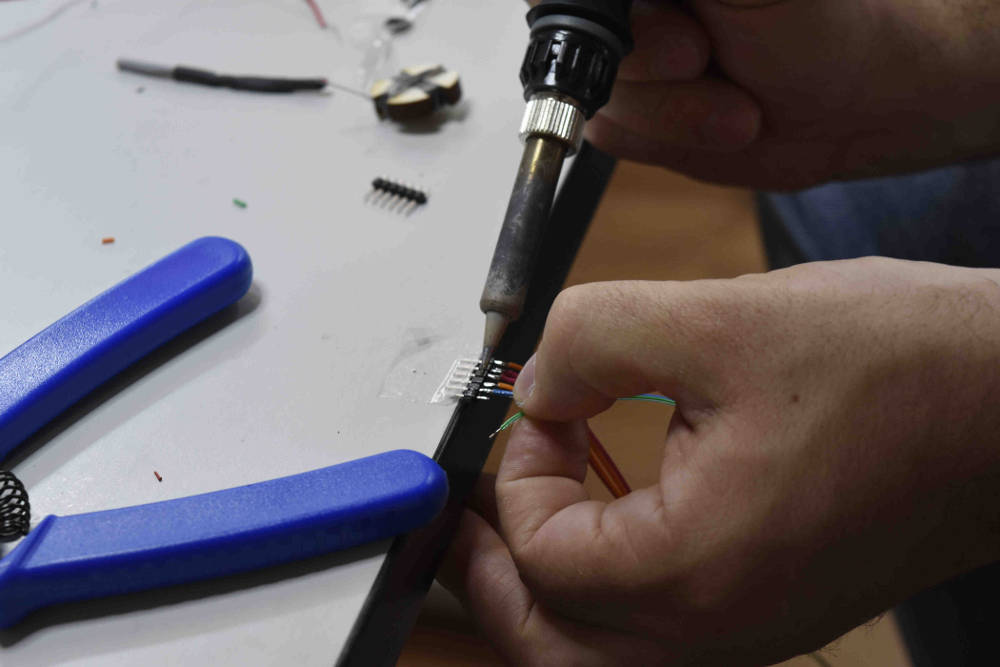
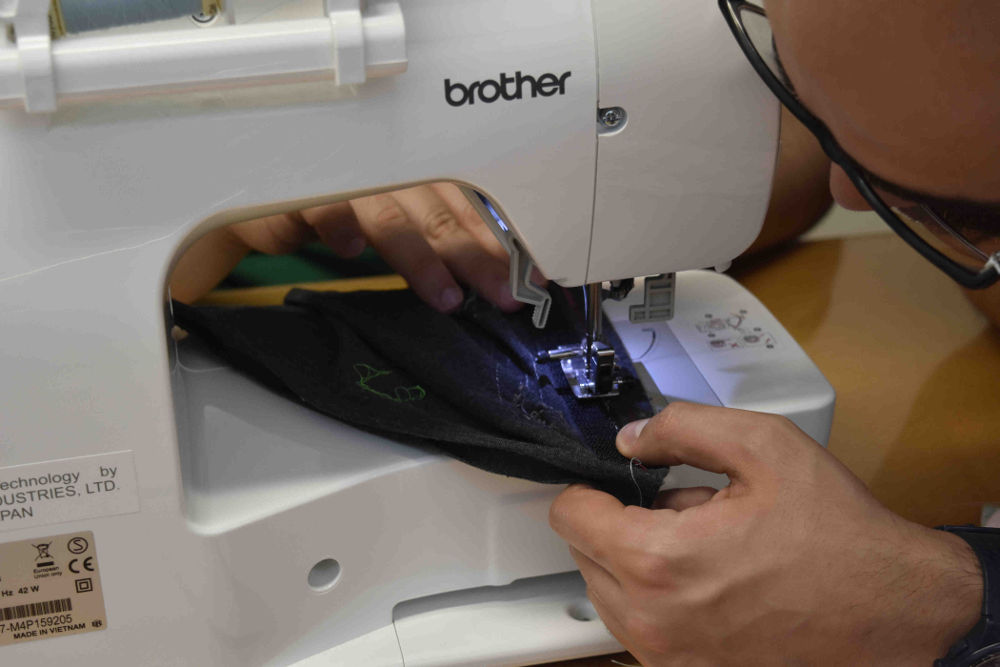
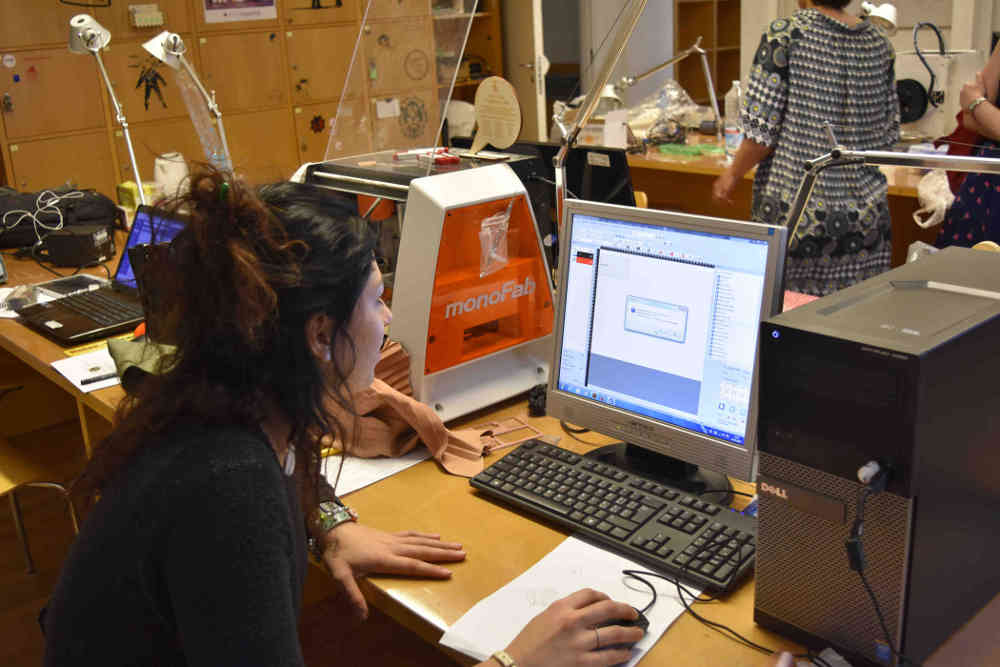
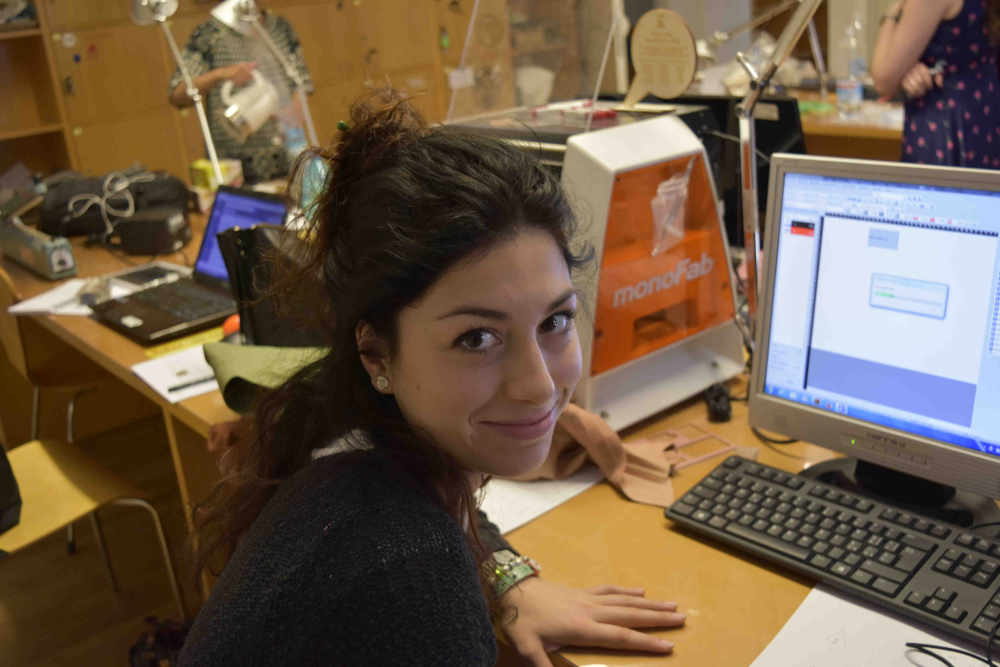
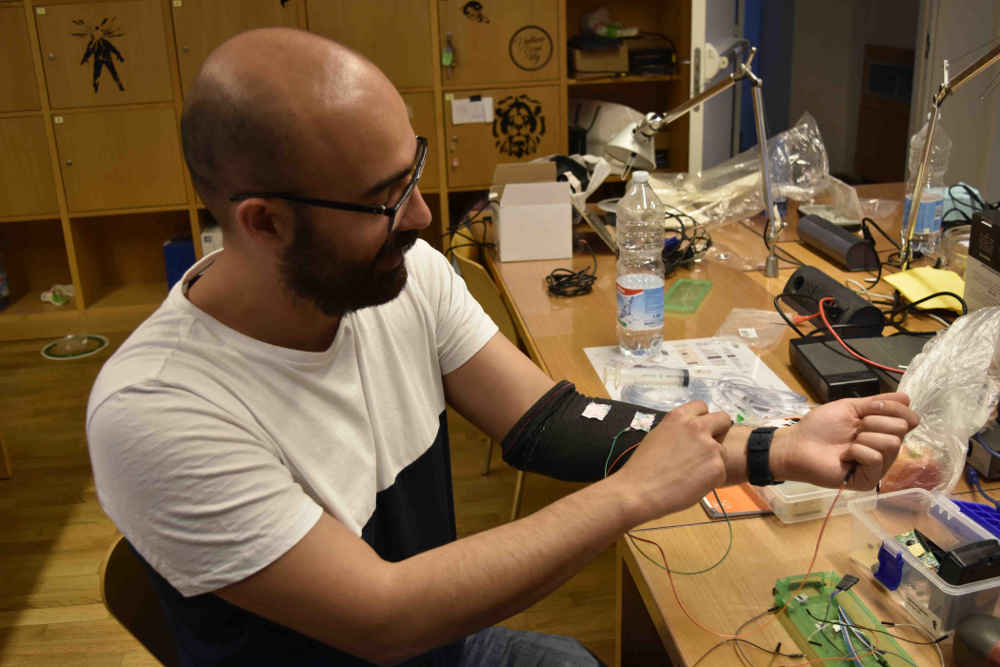
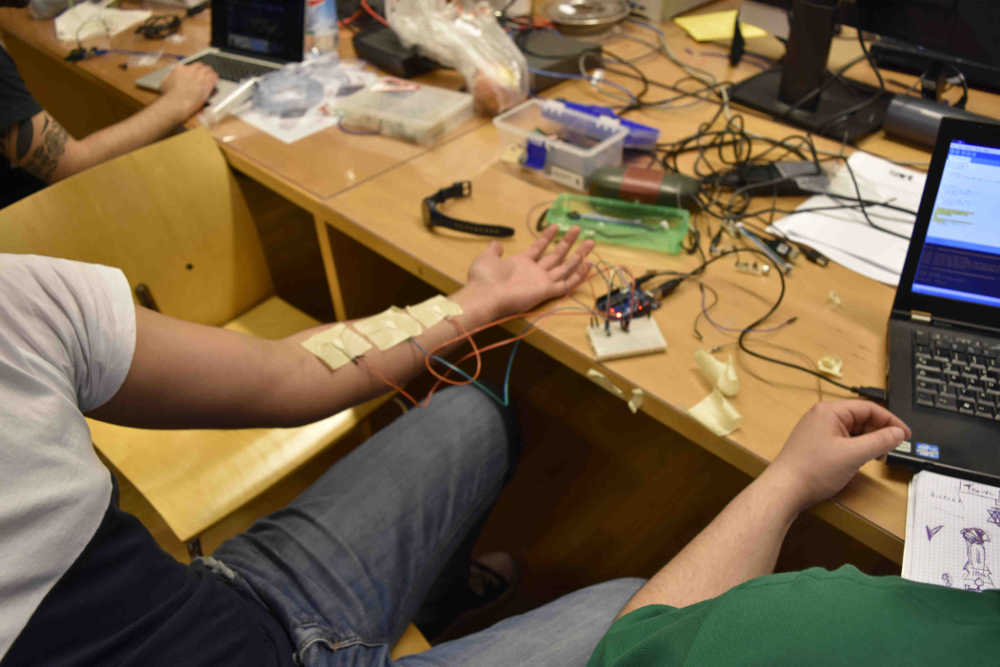
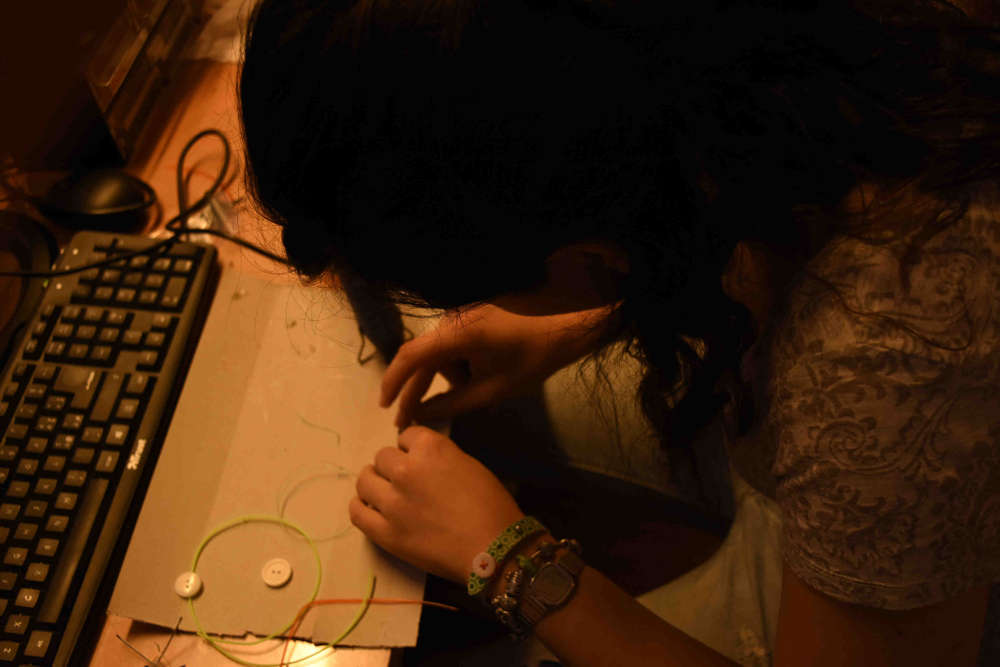
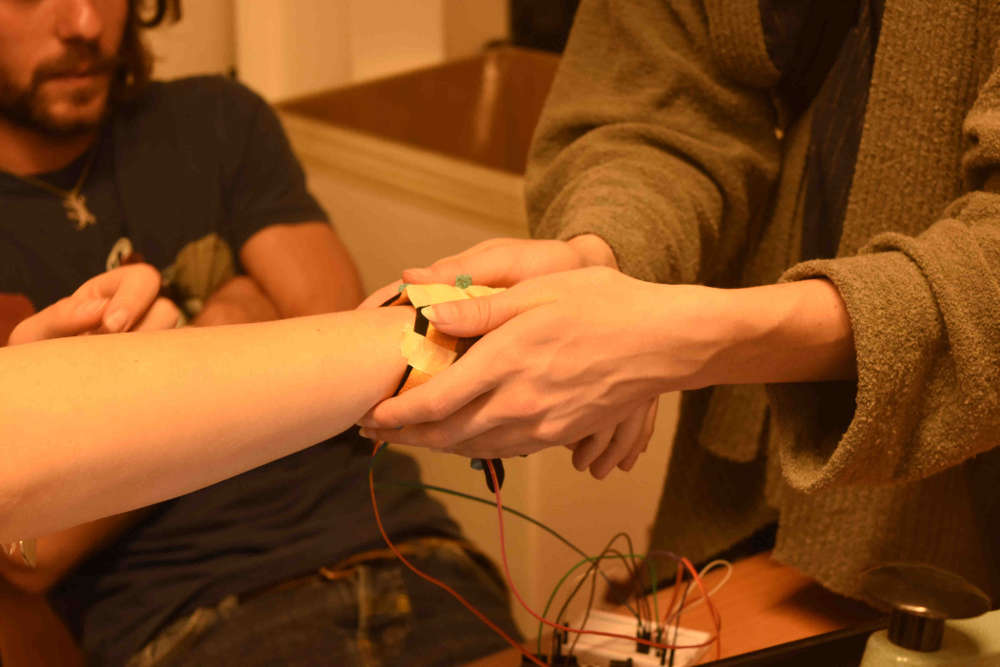
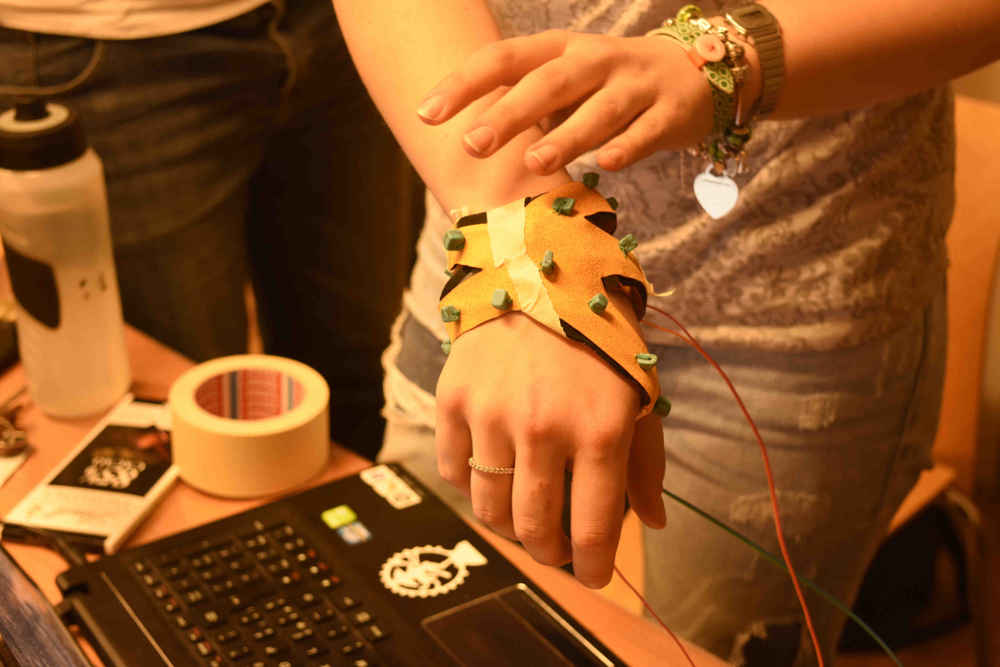
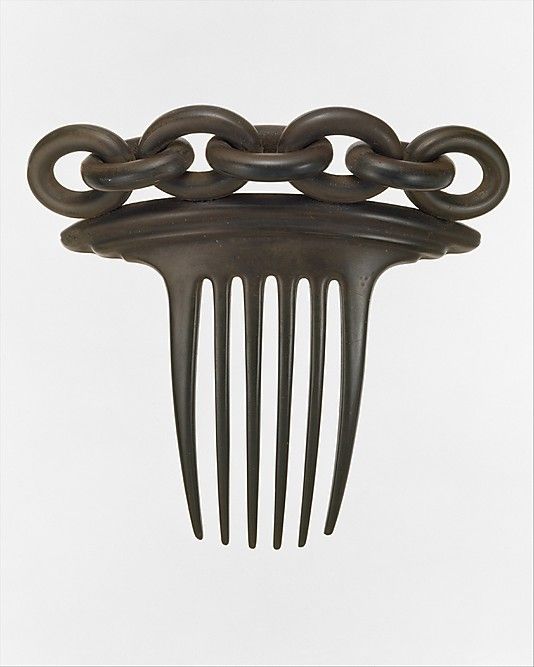 I made it vector on Illustrator
I made it vector on Illustrator